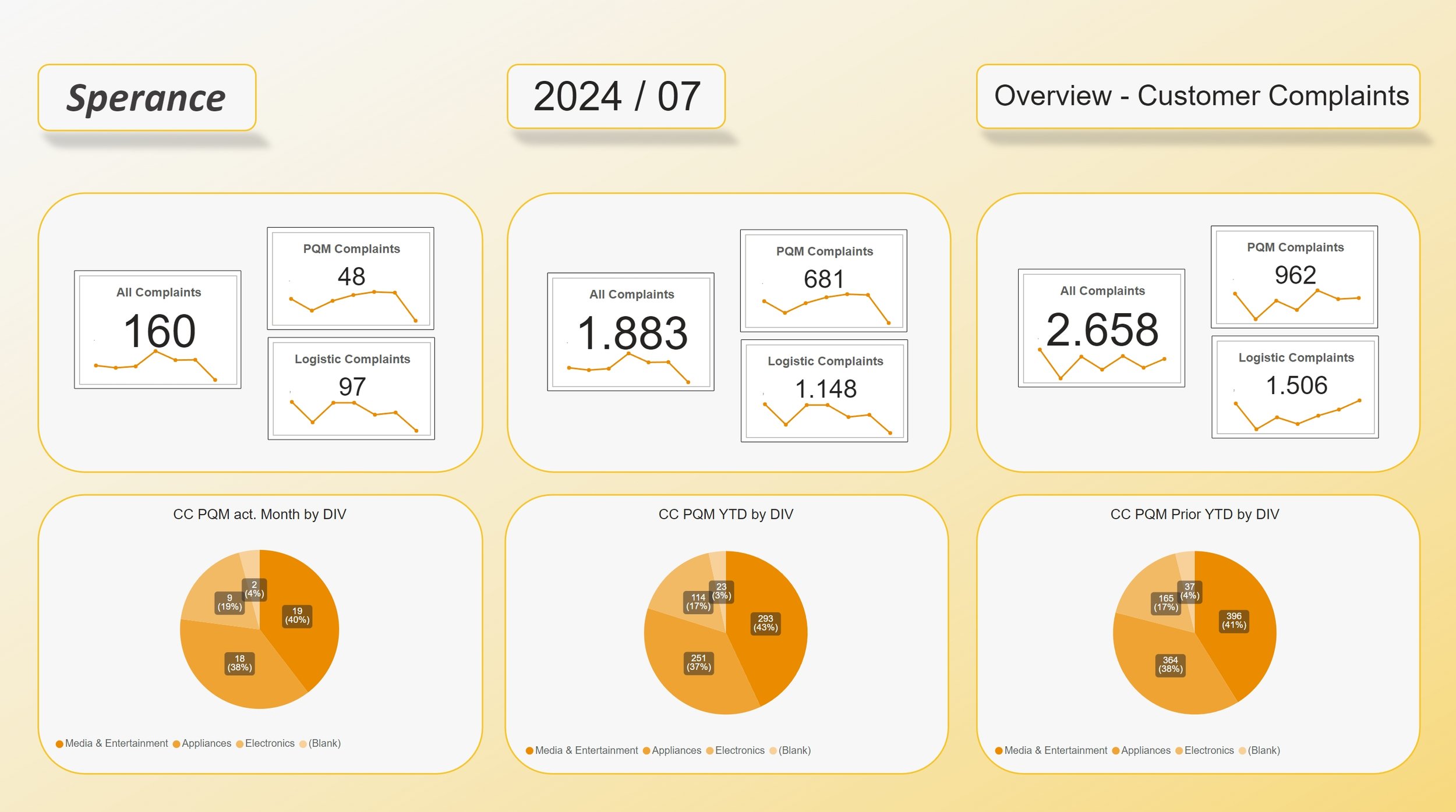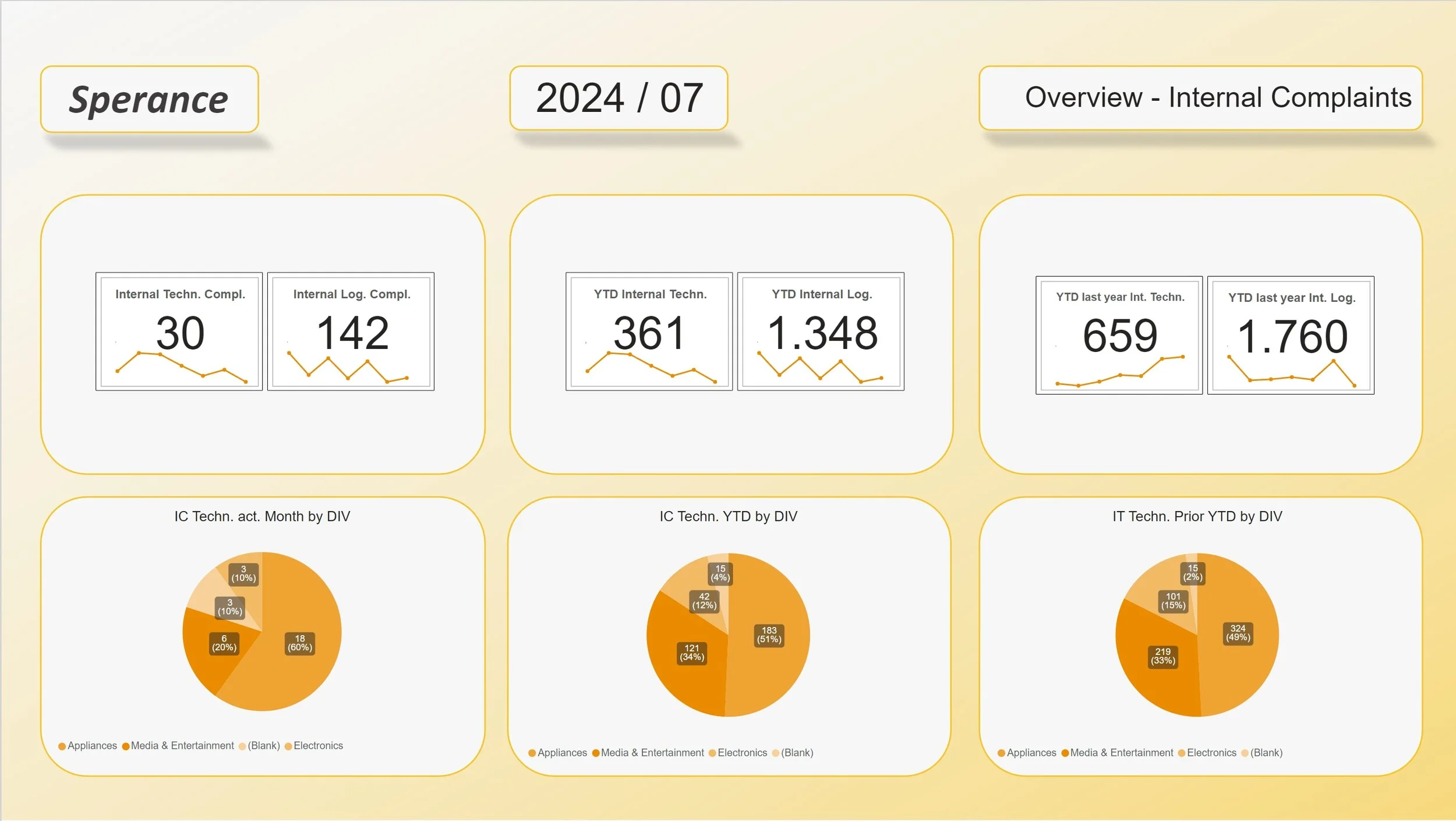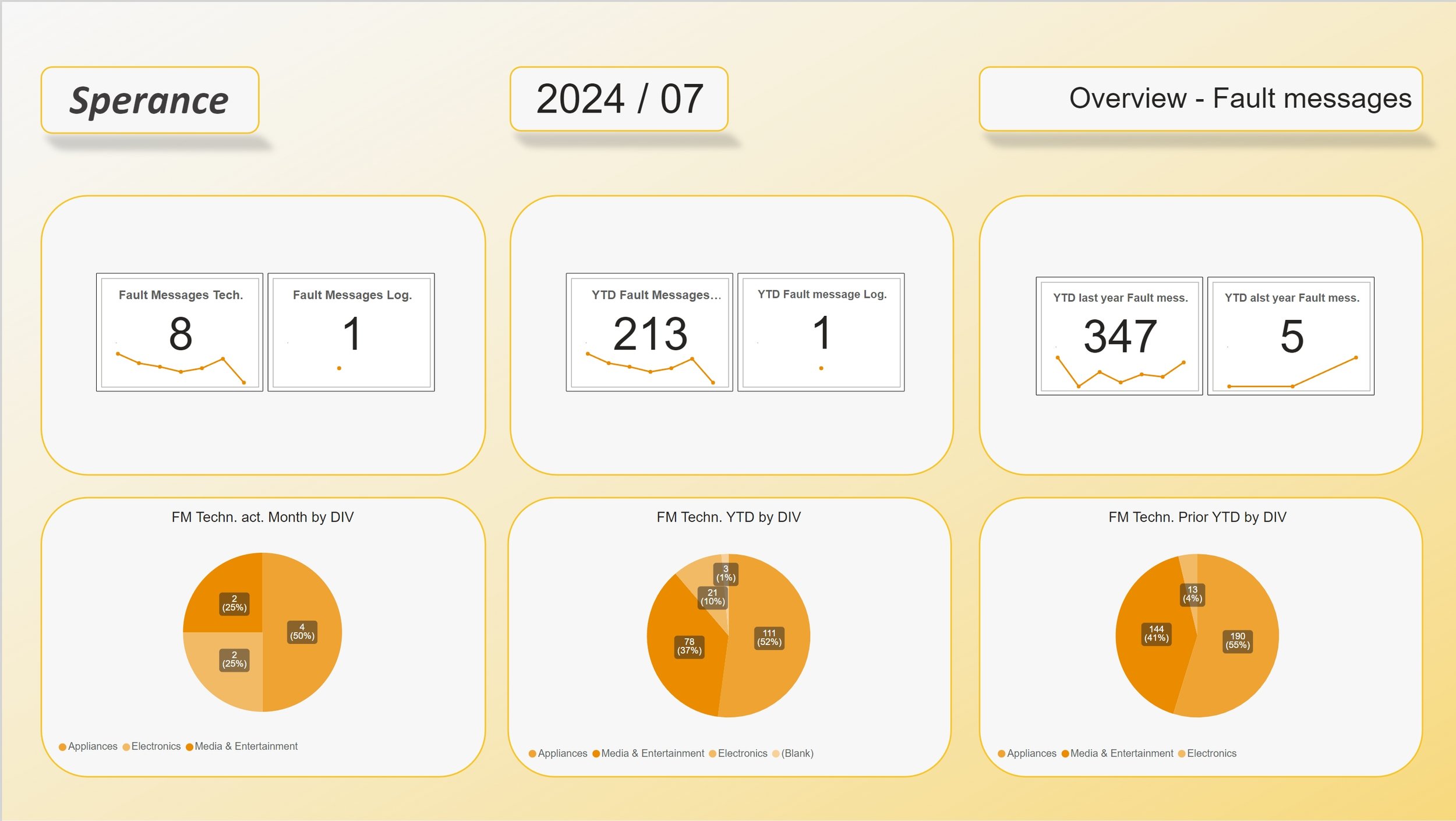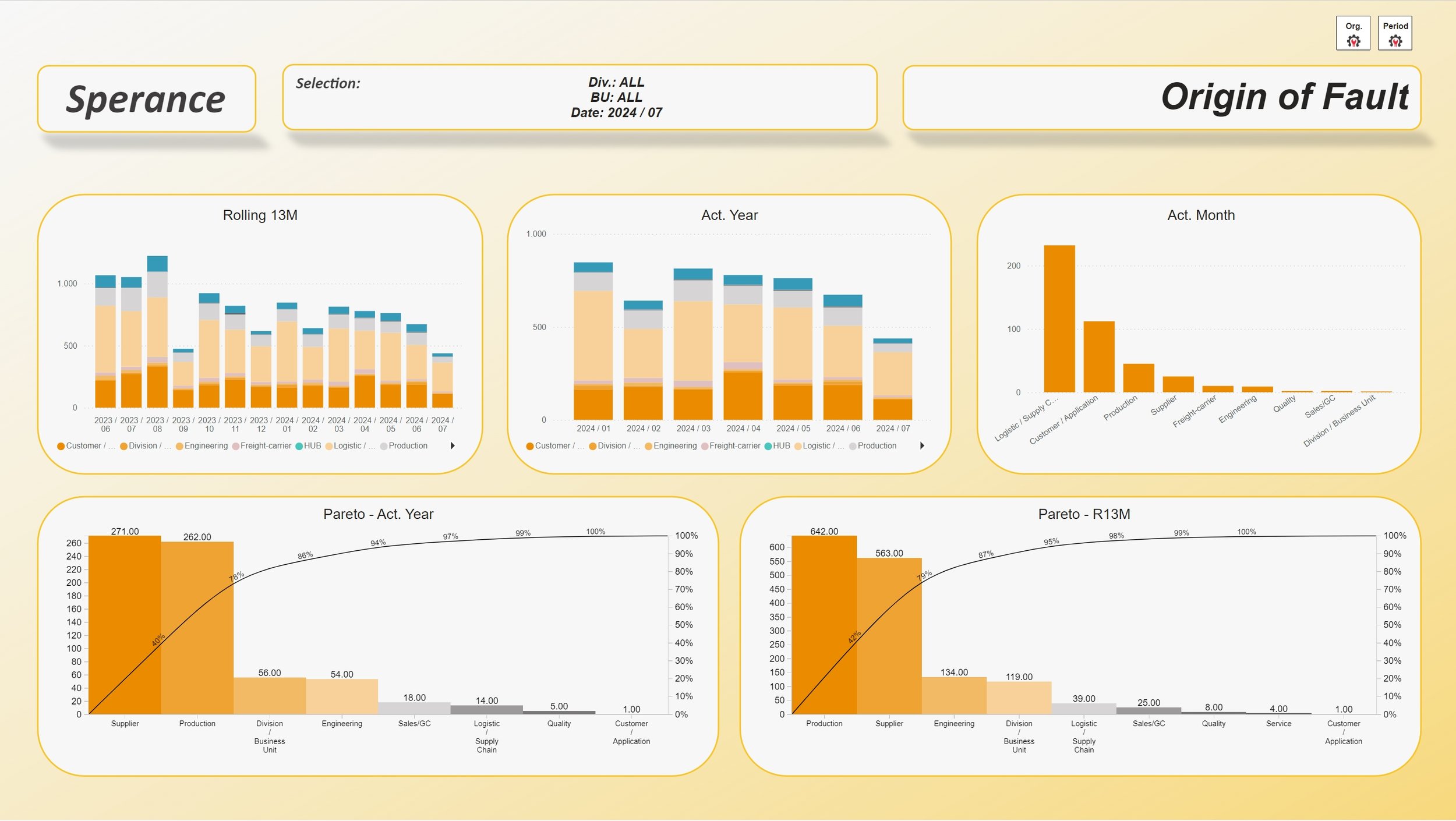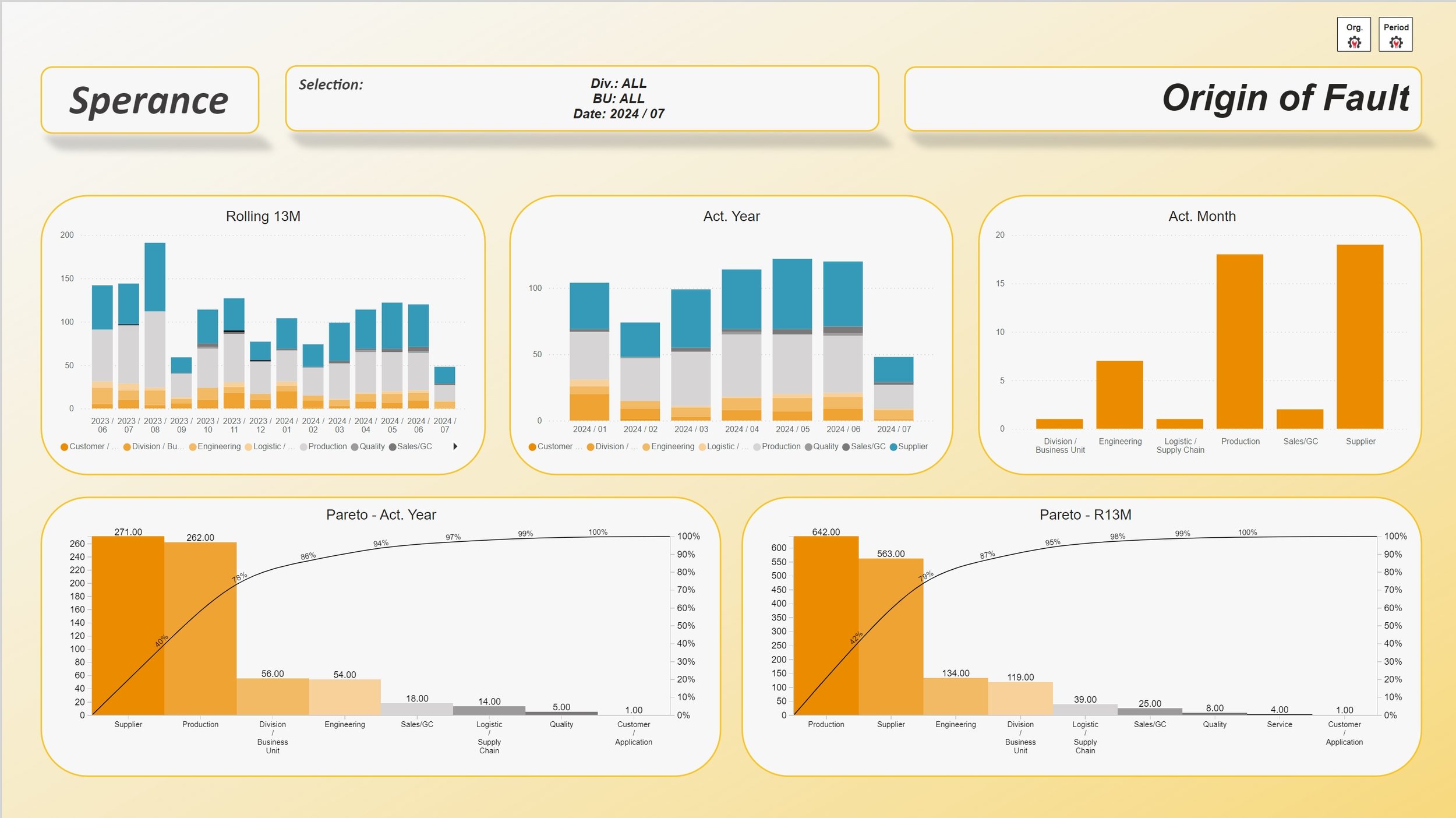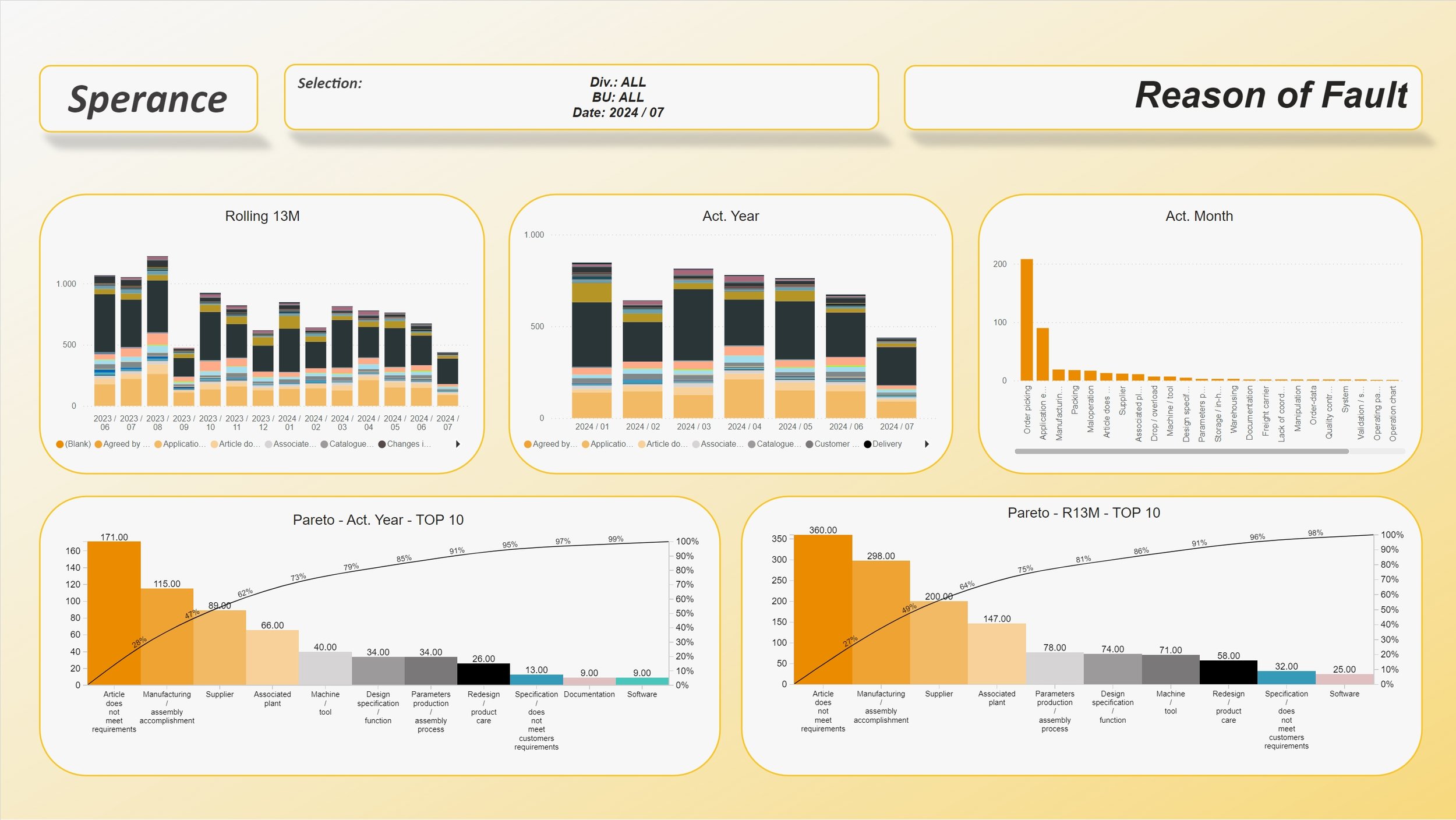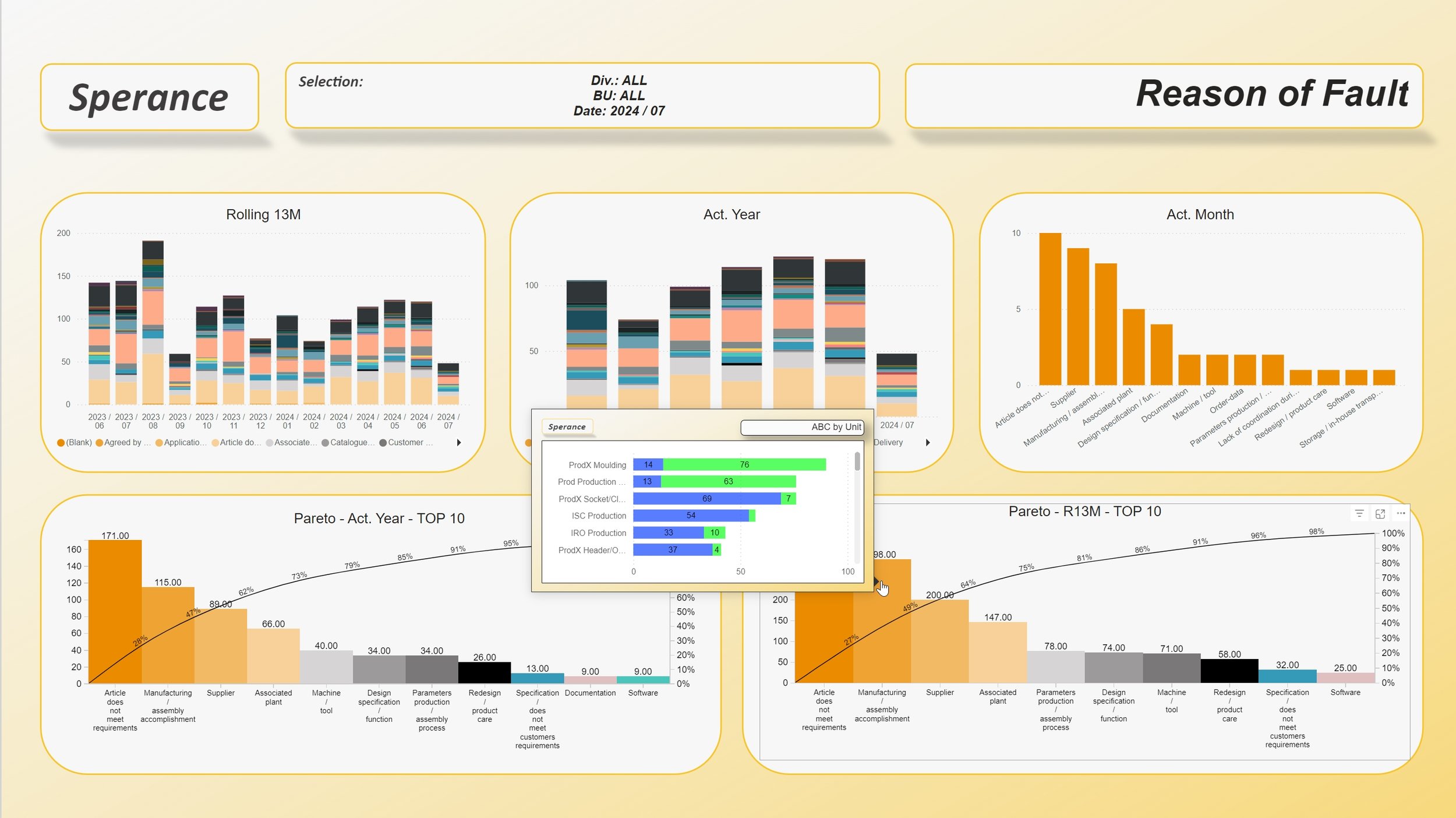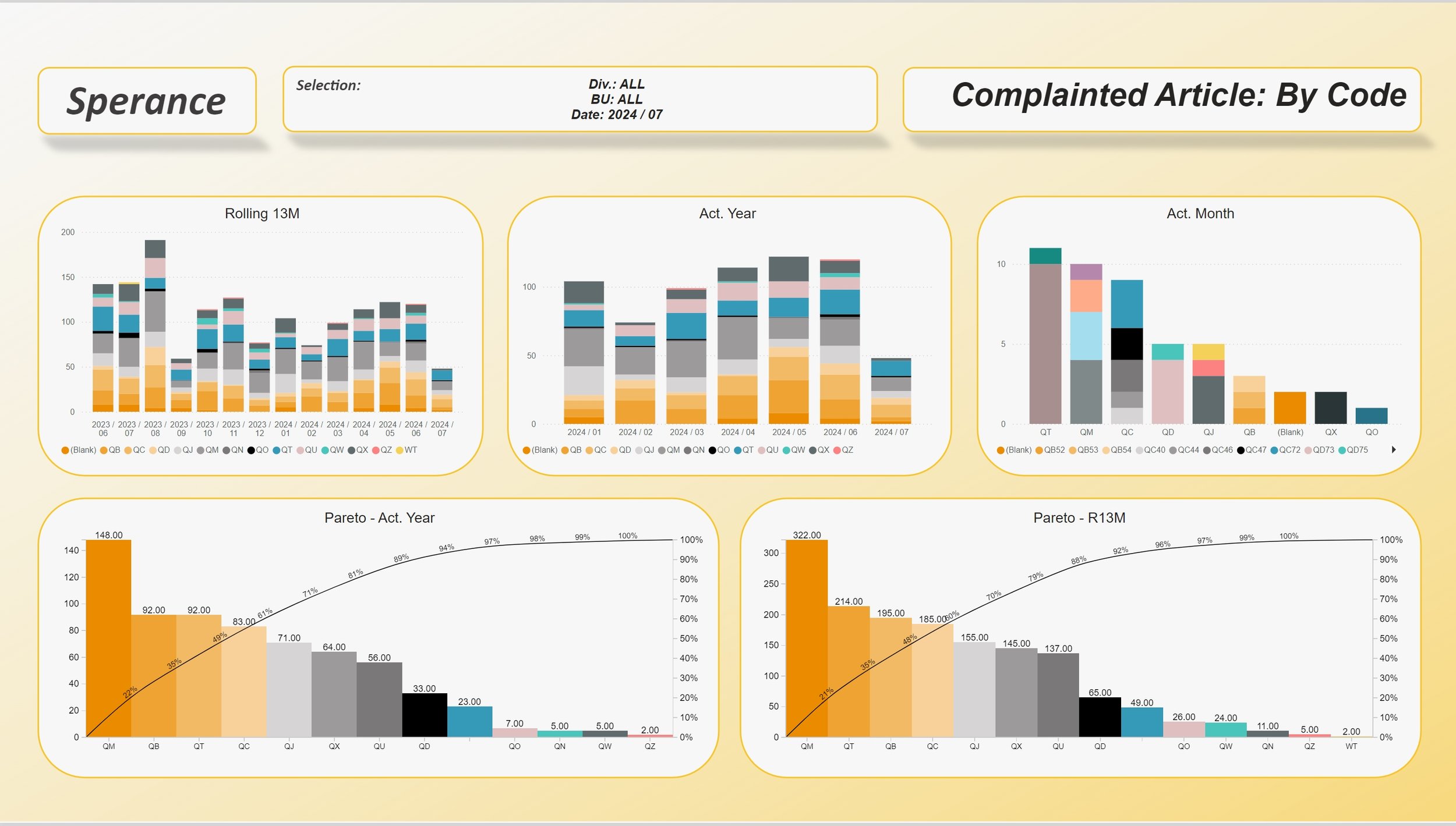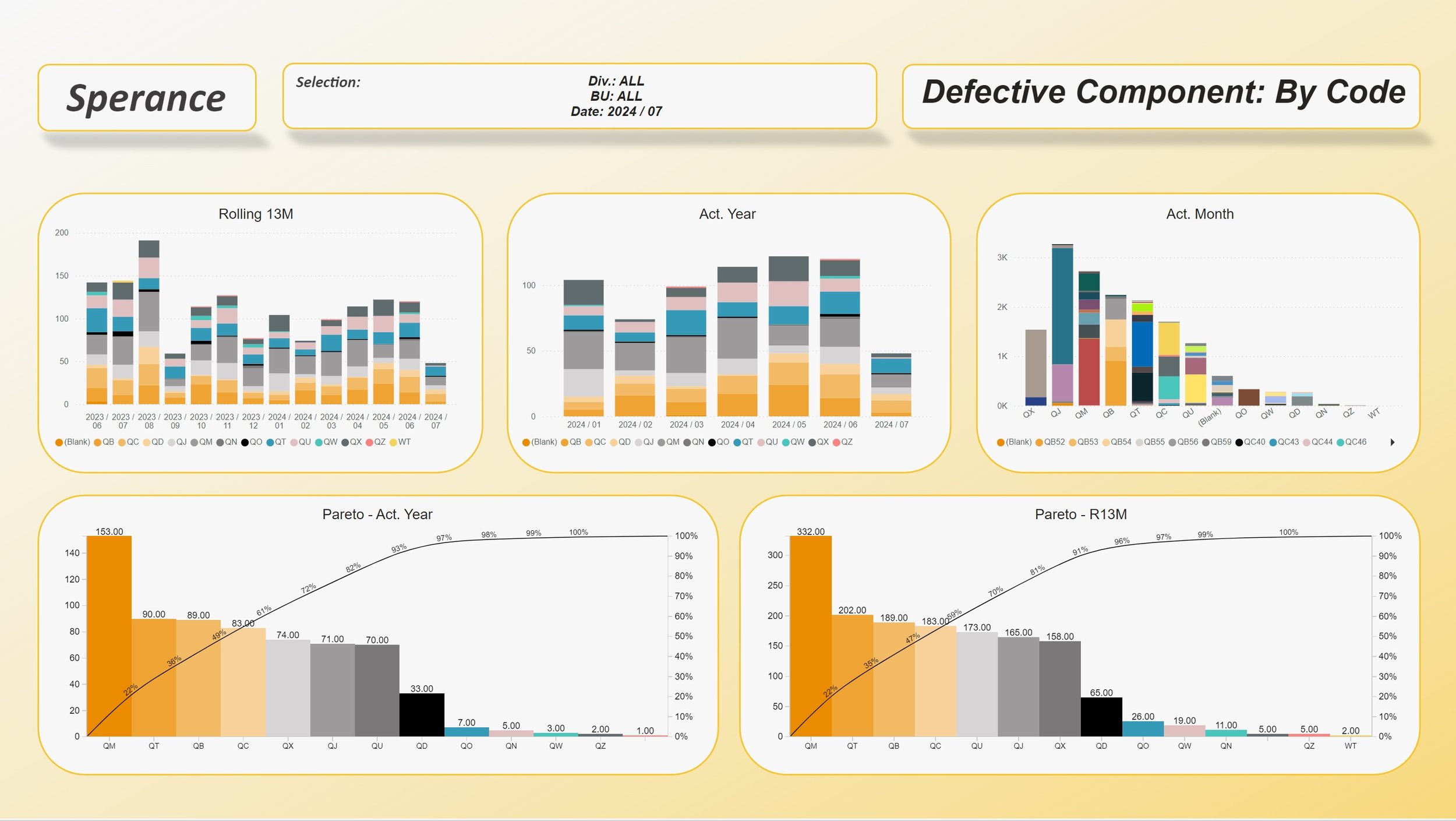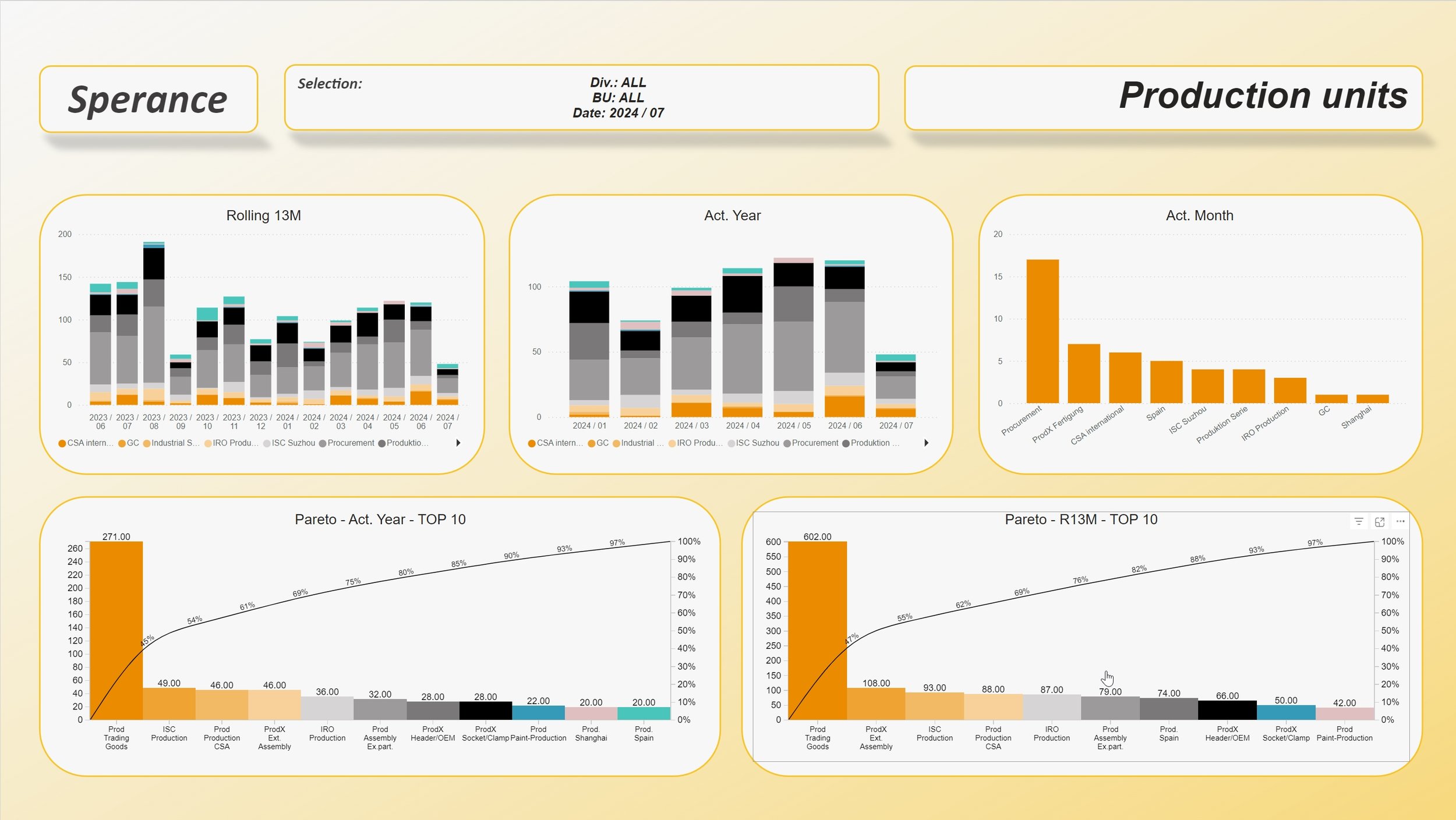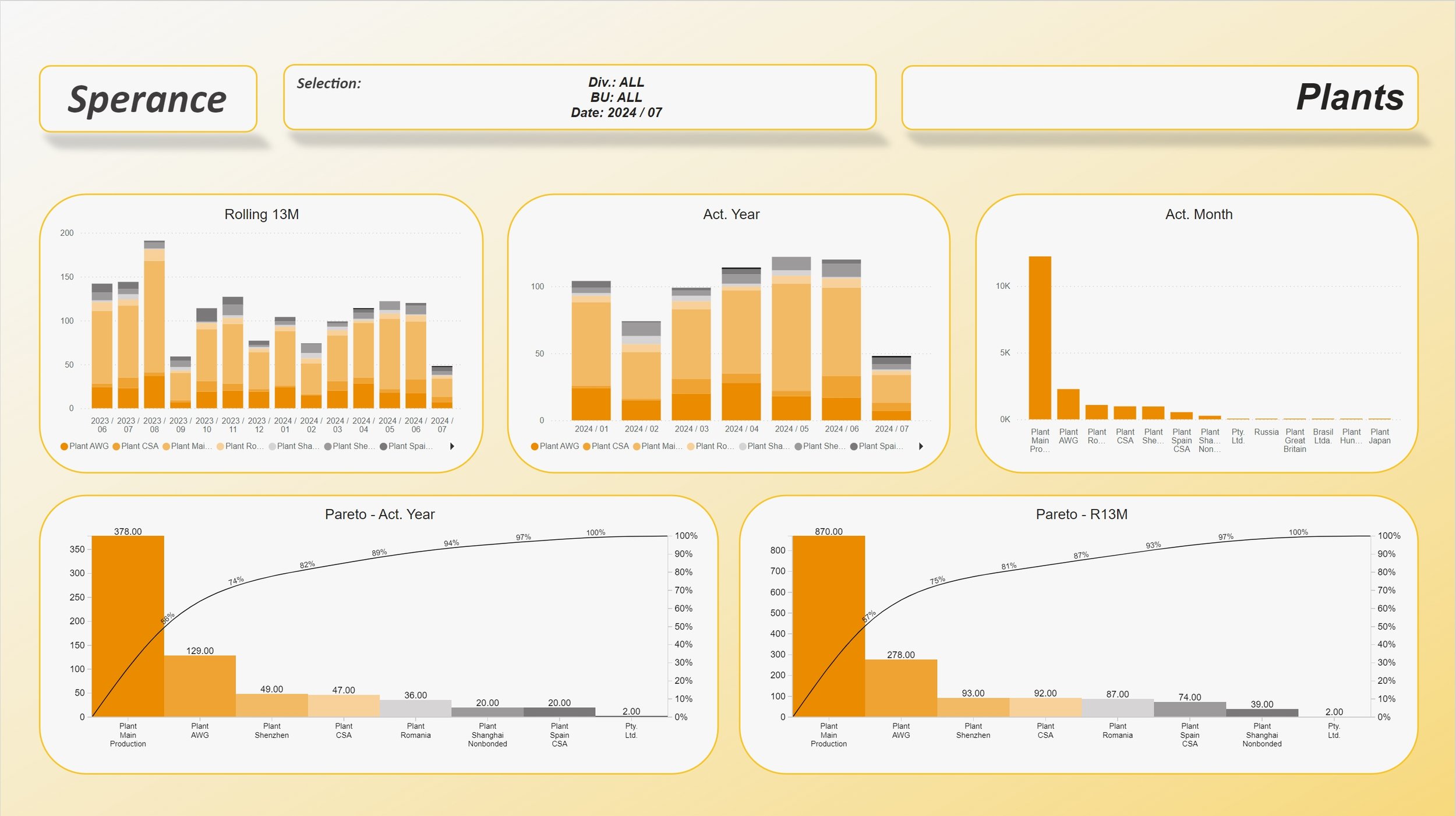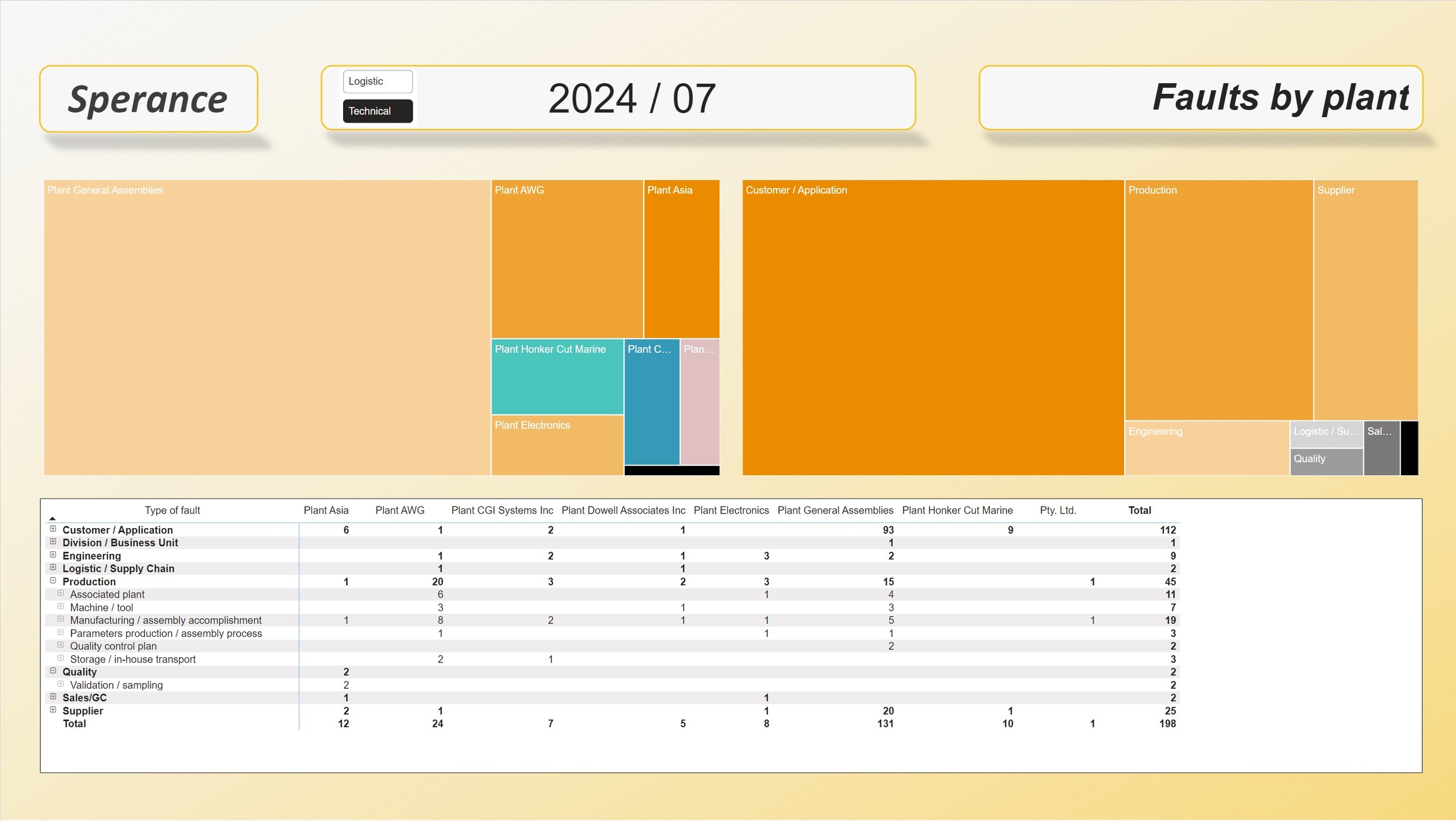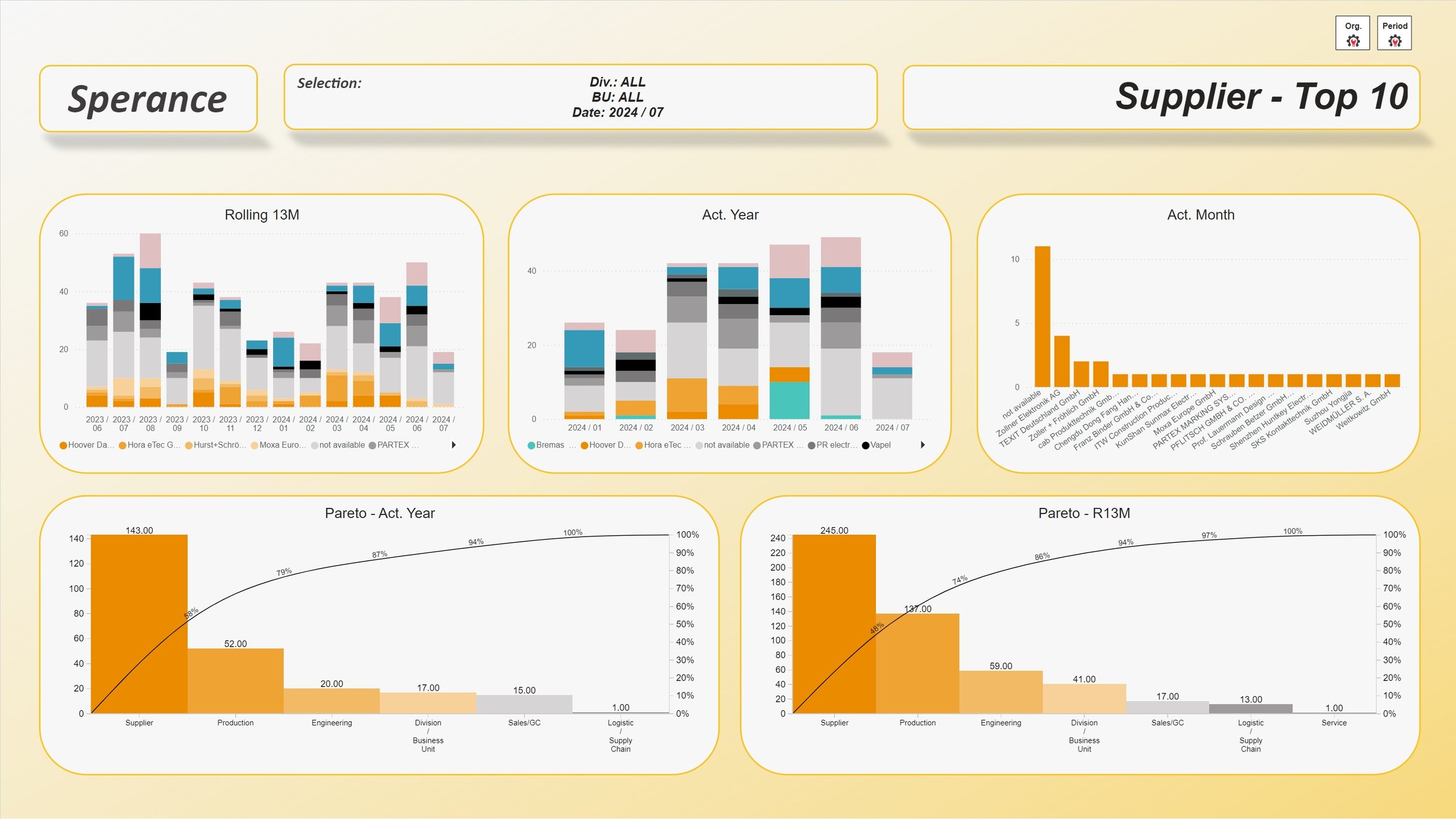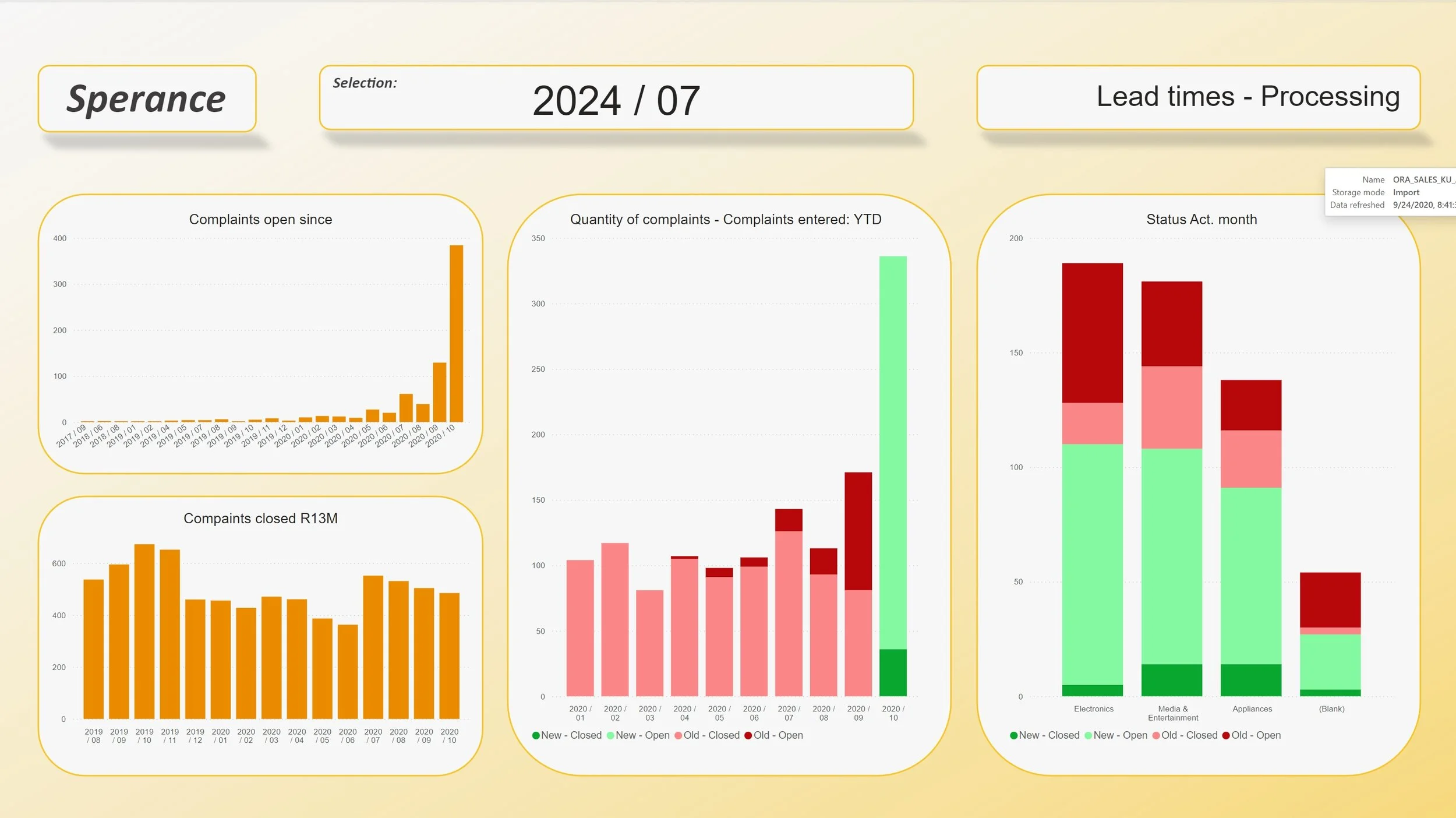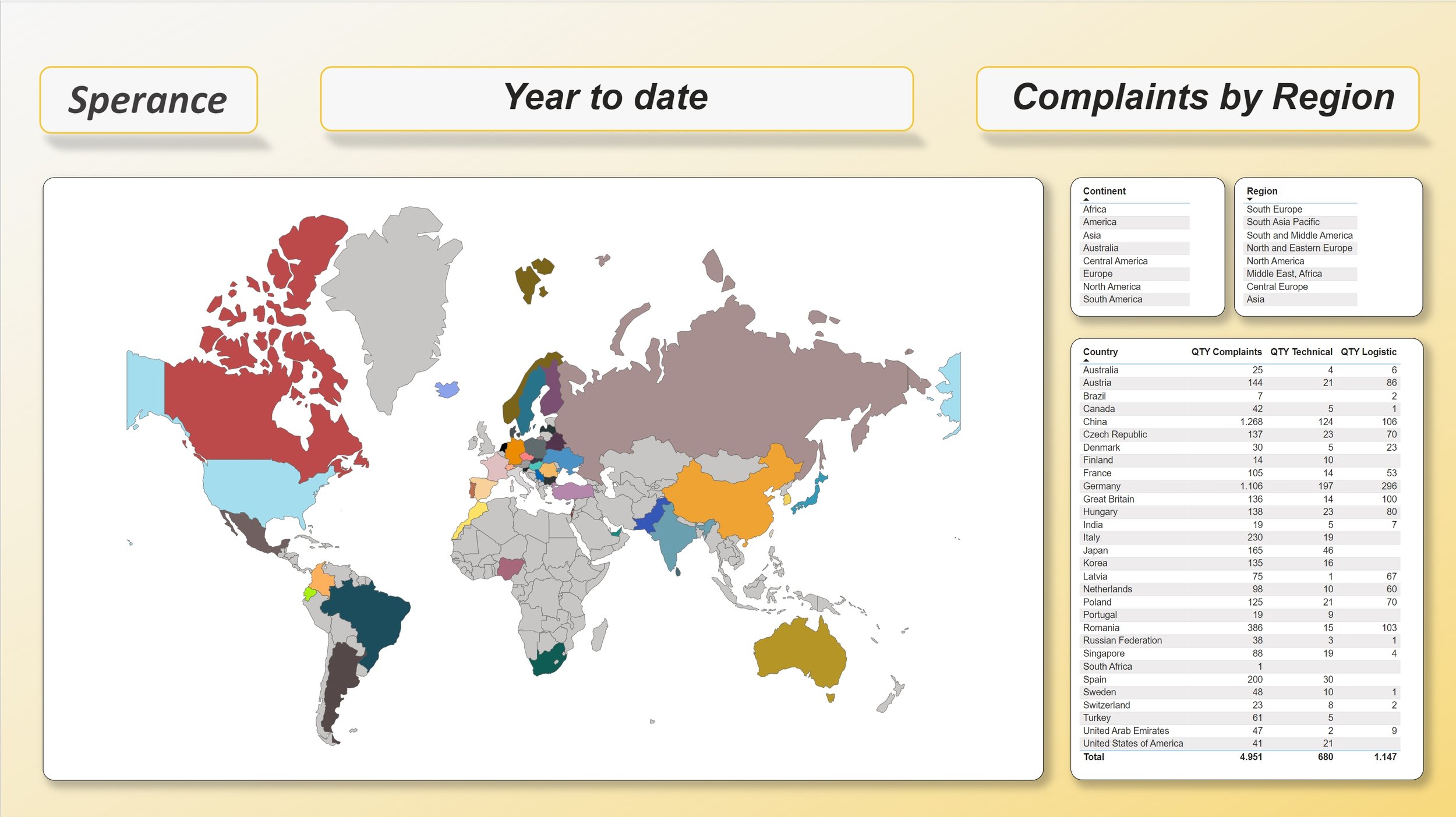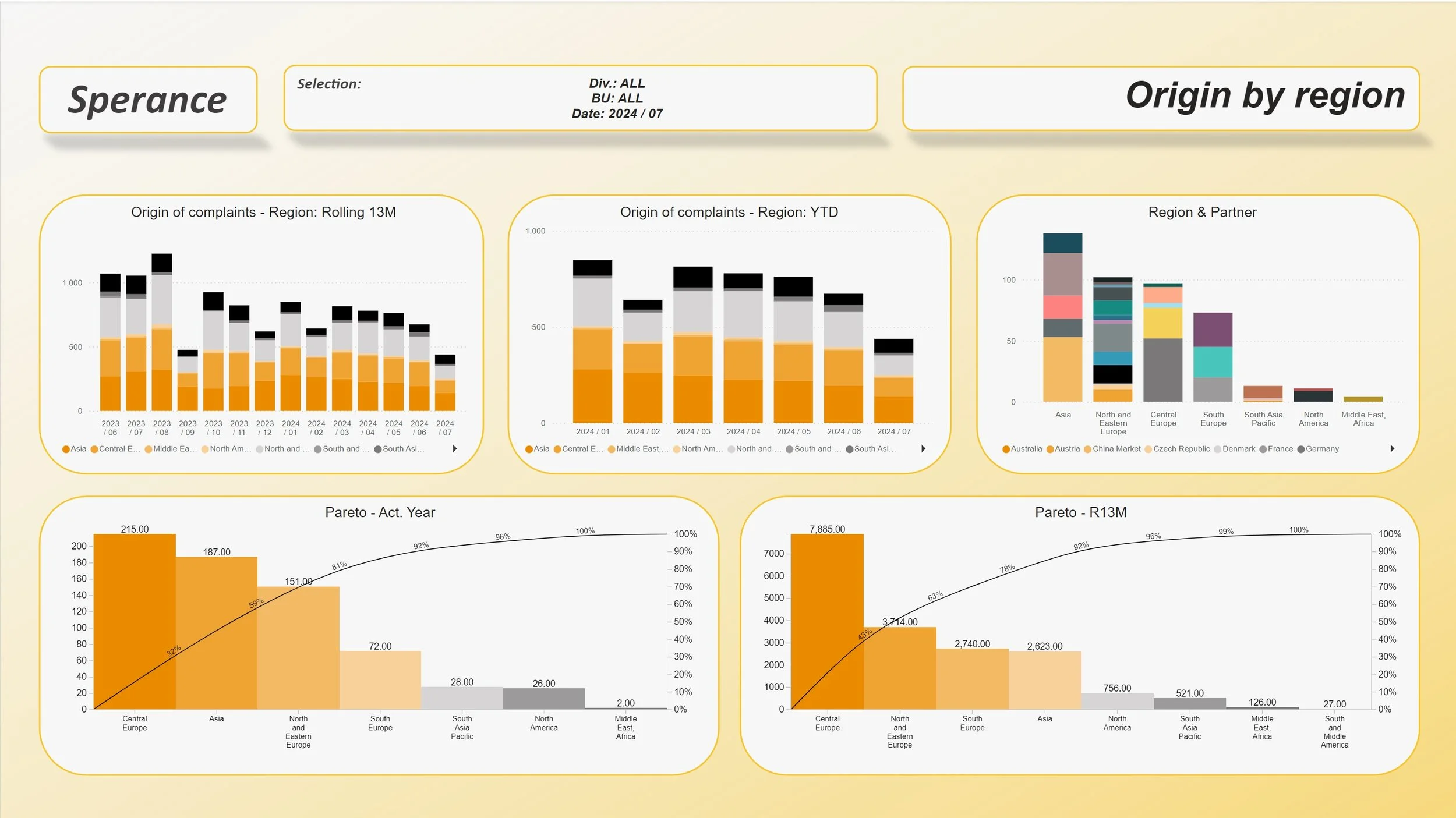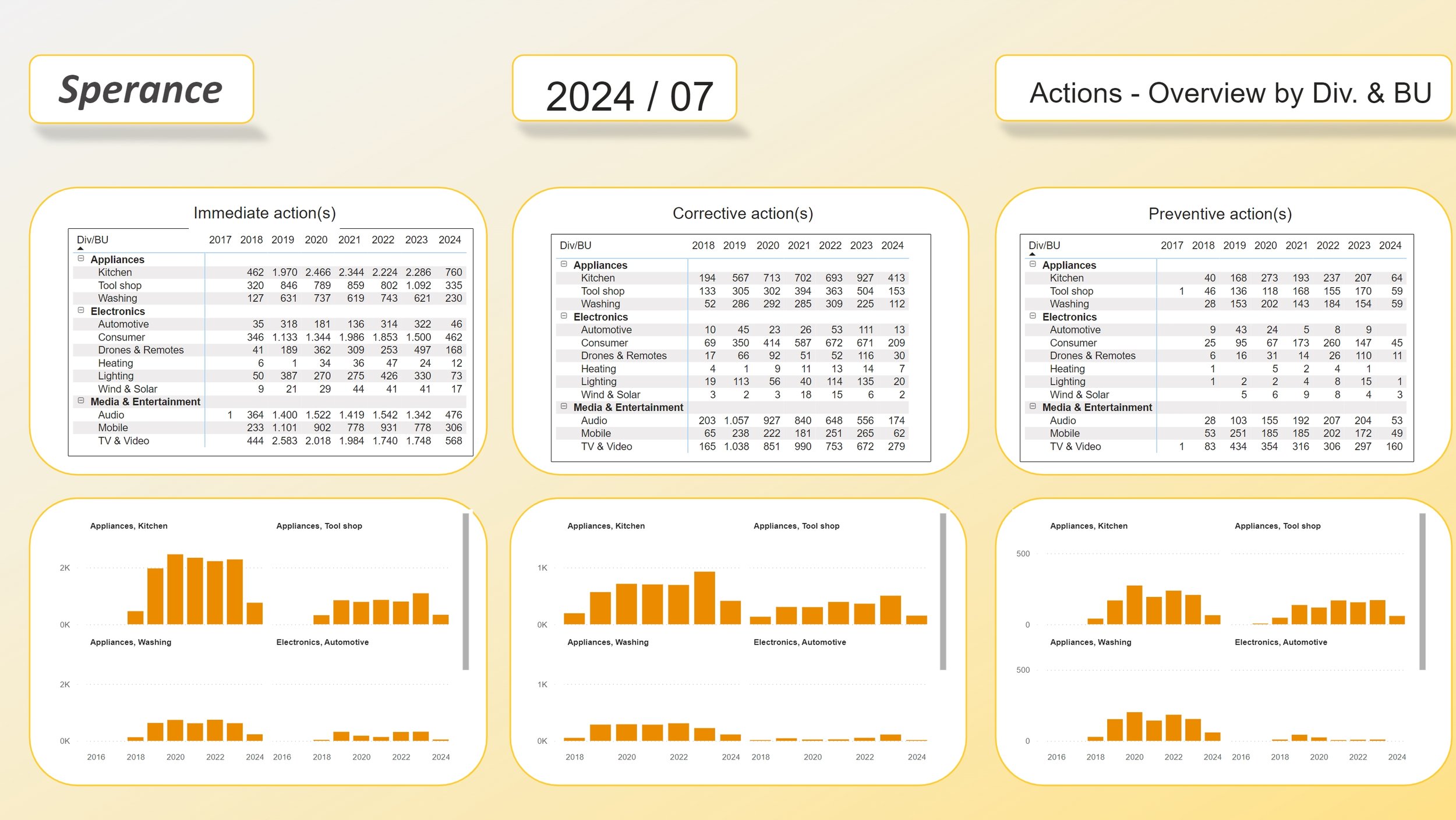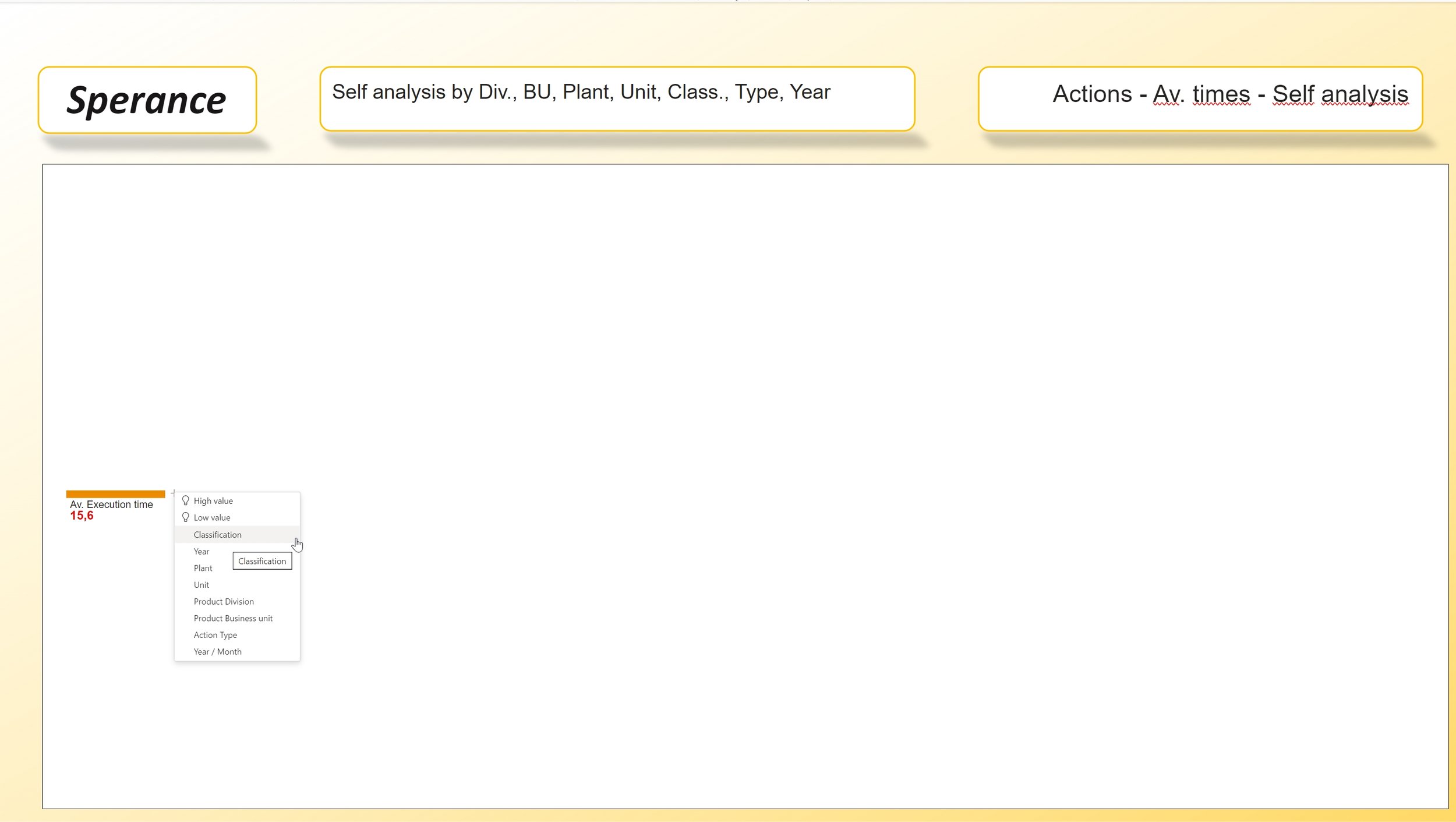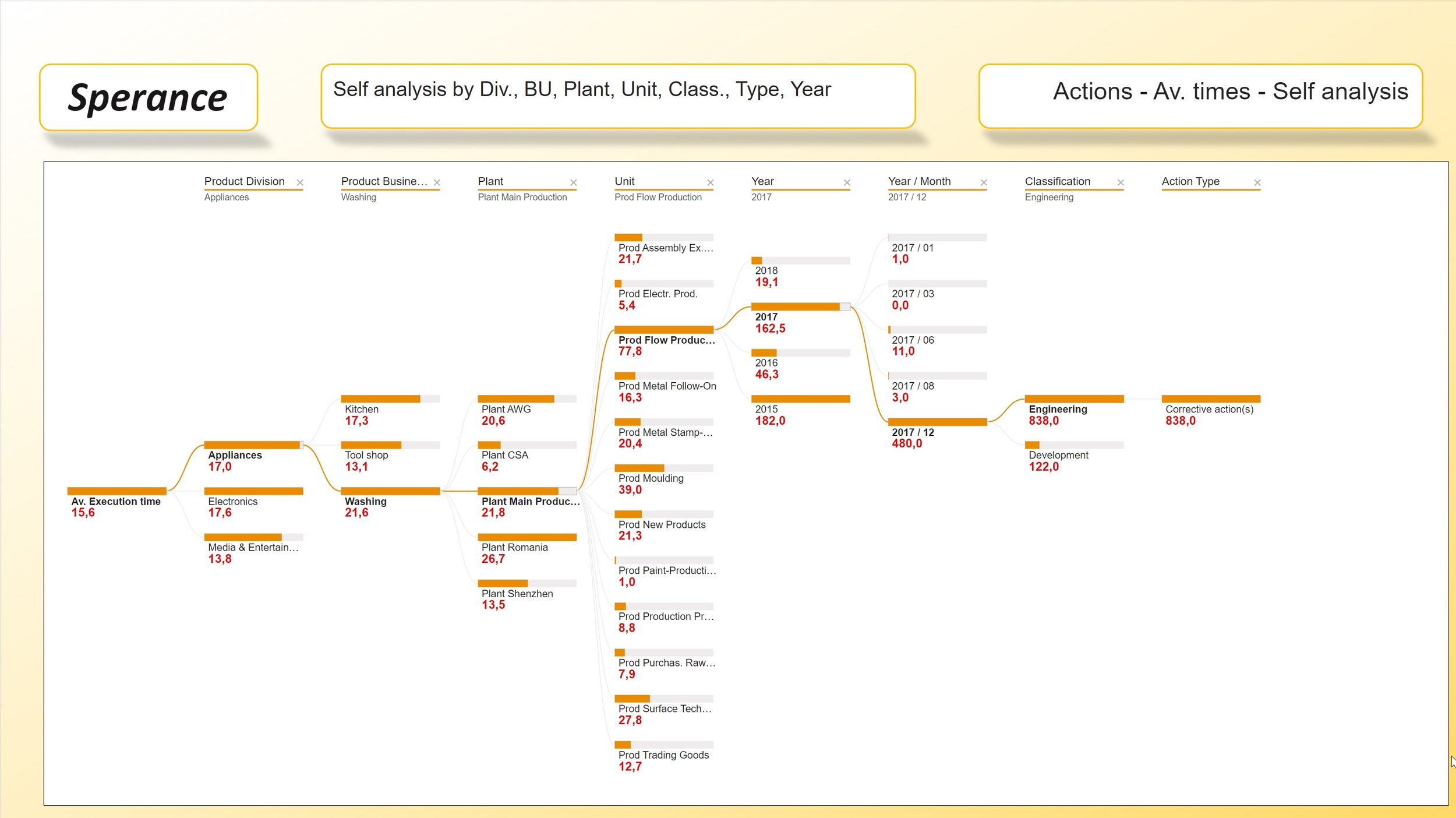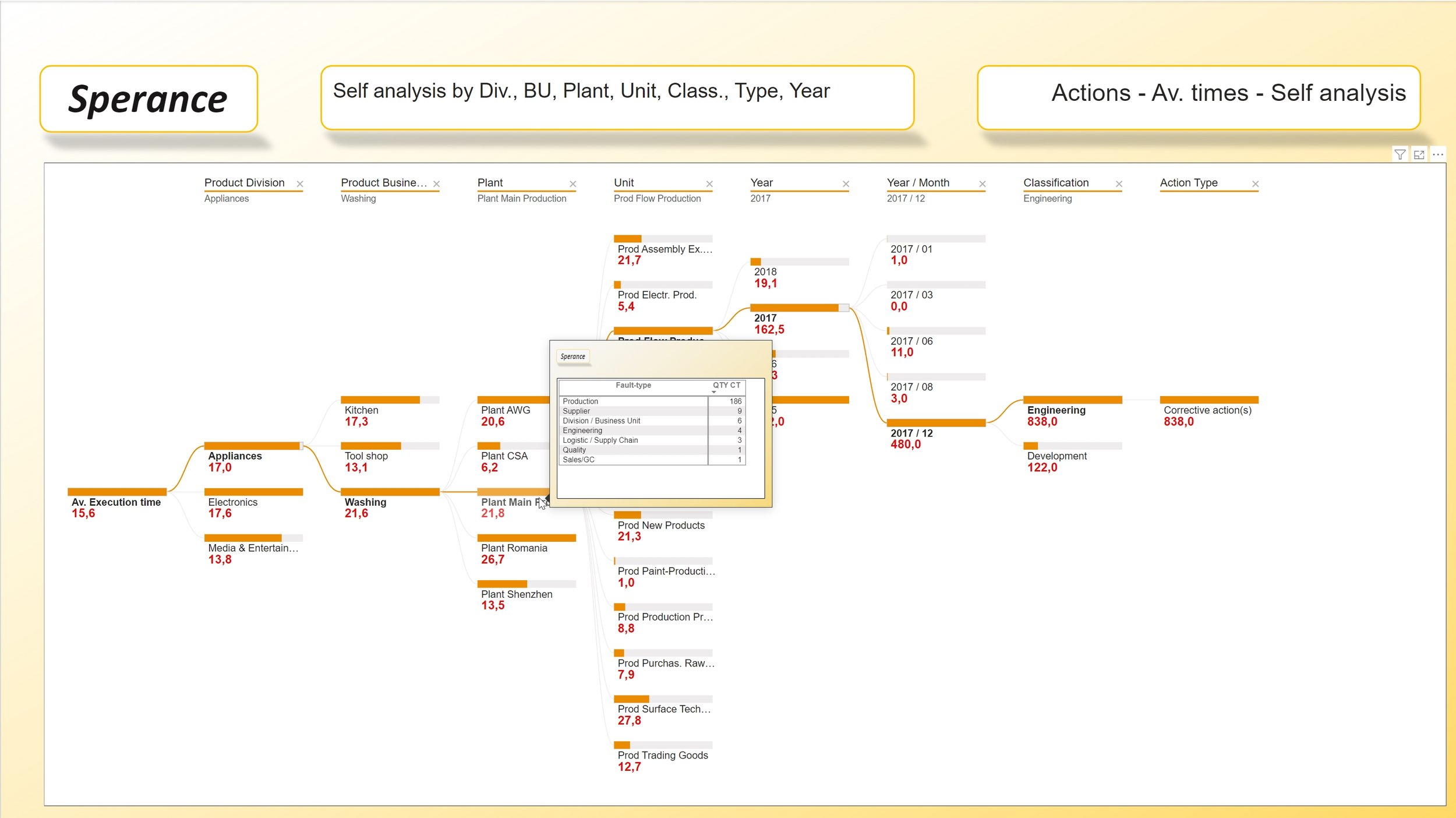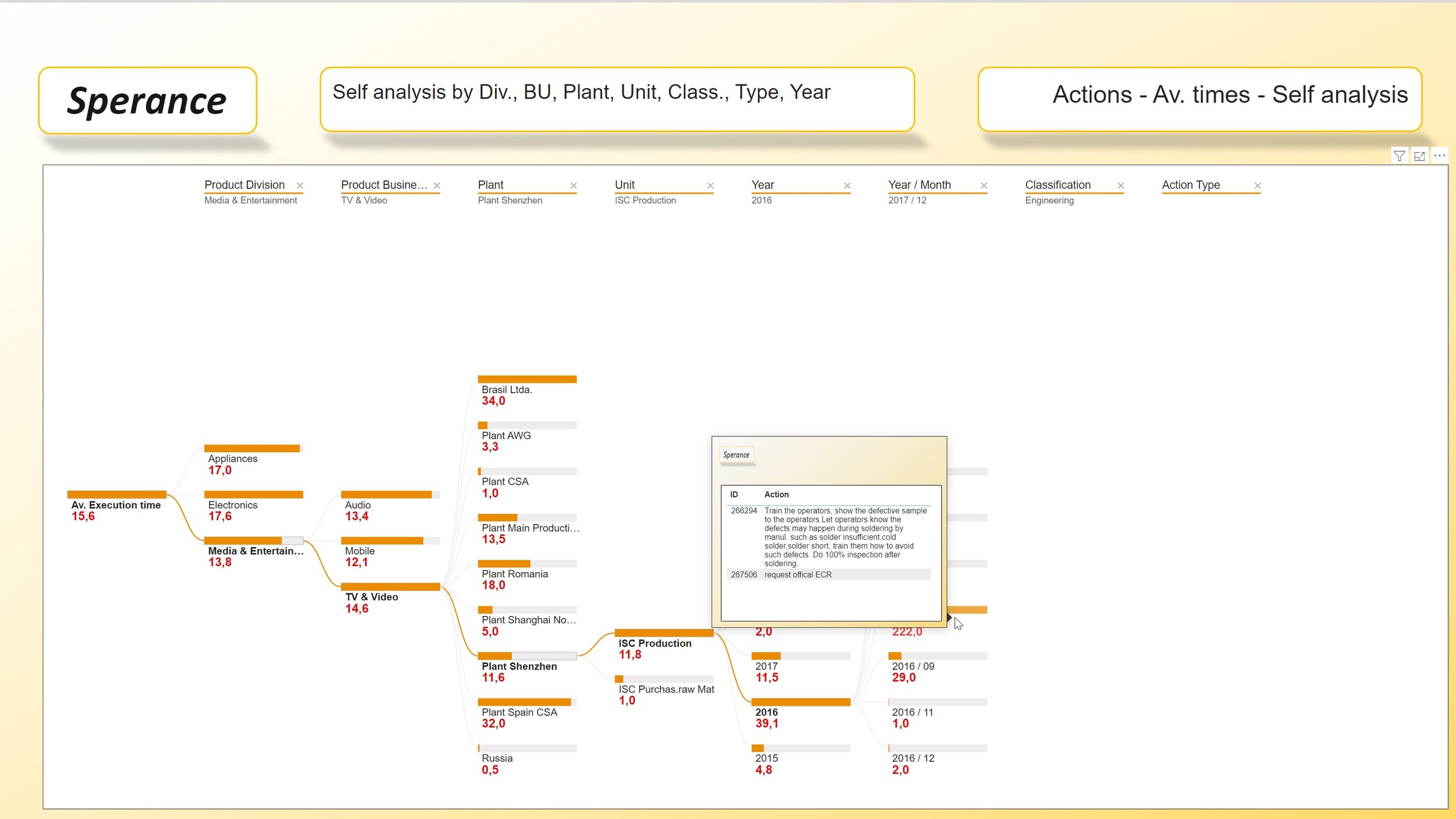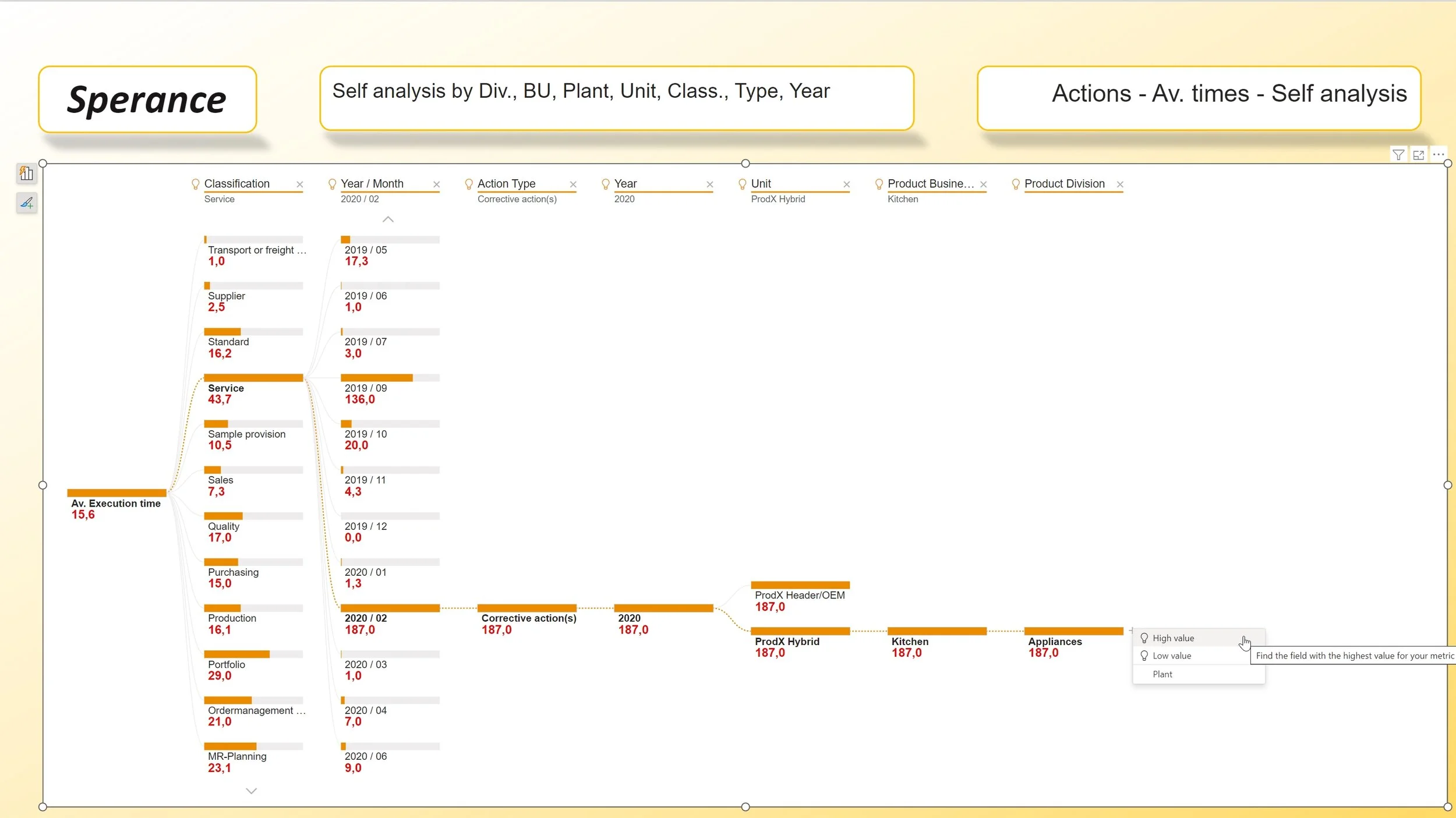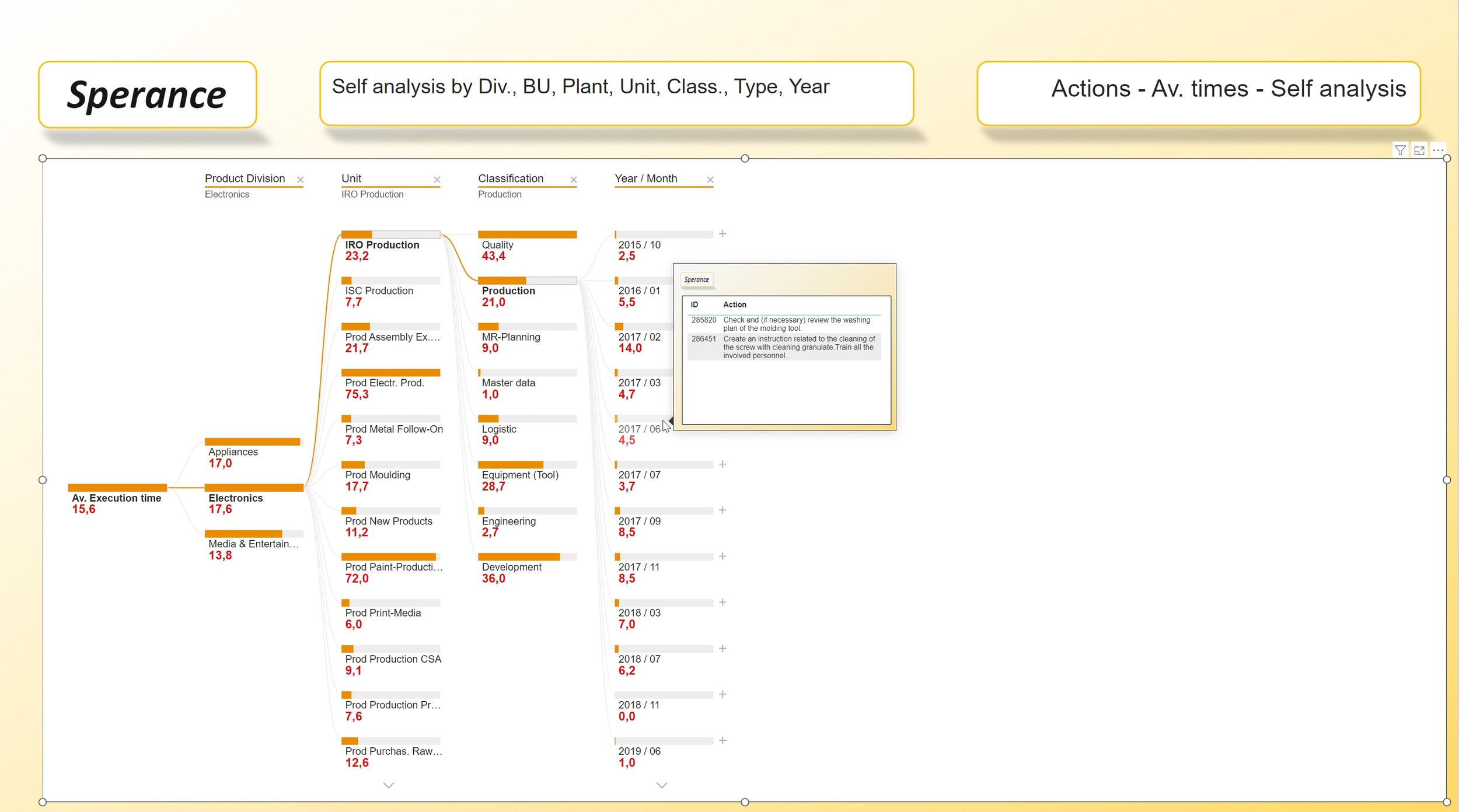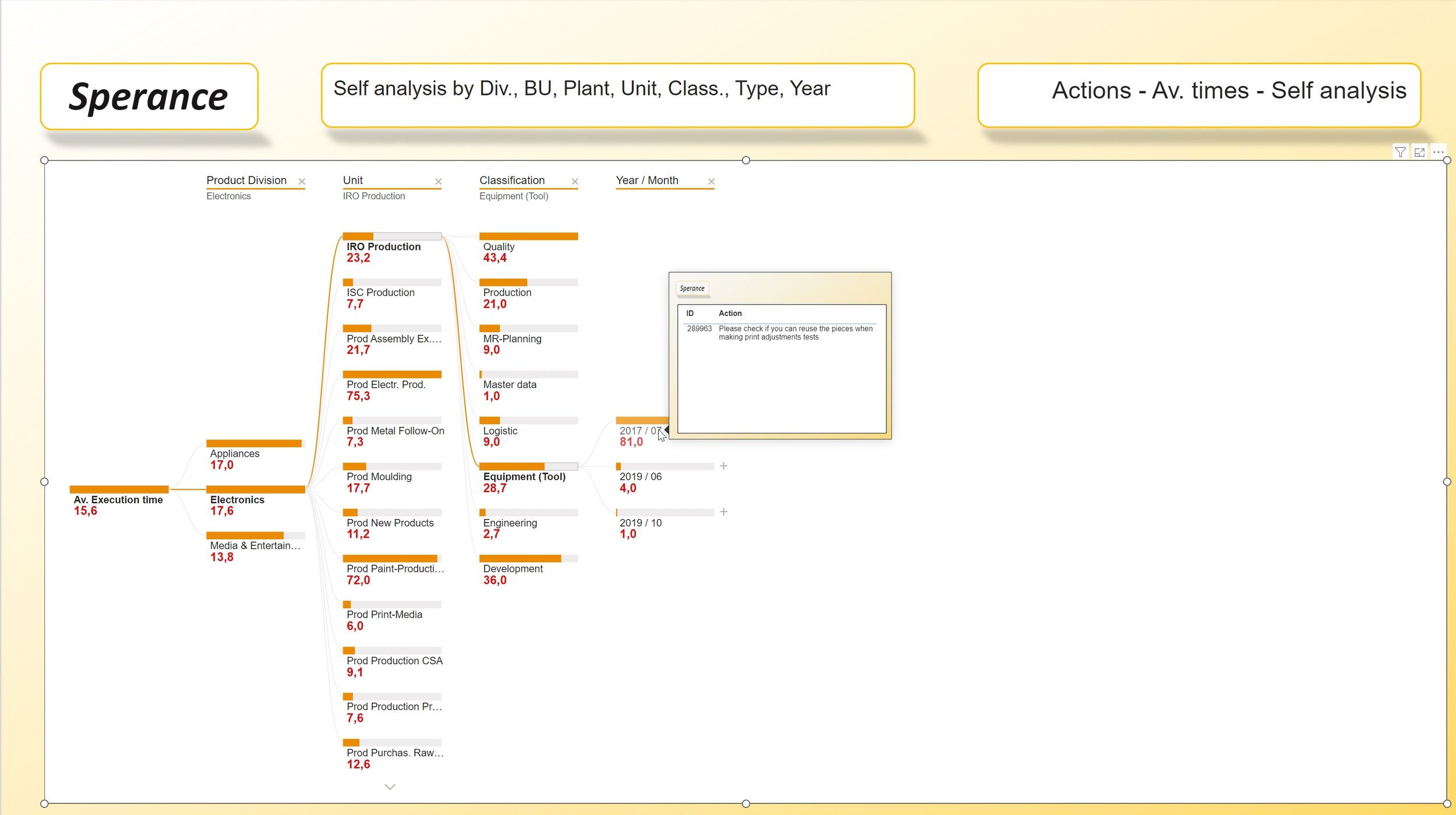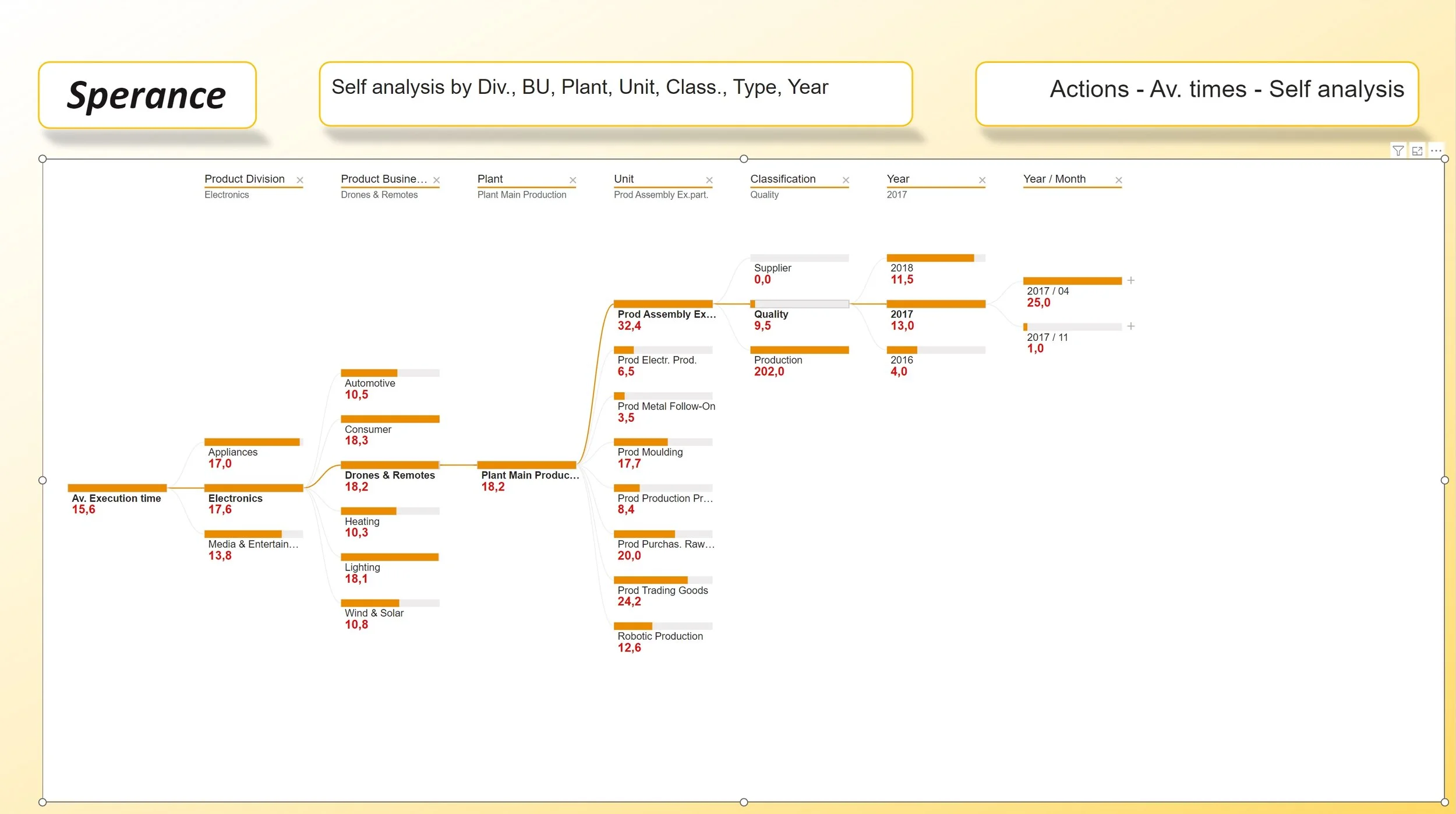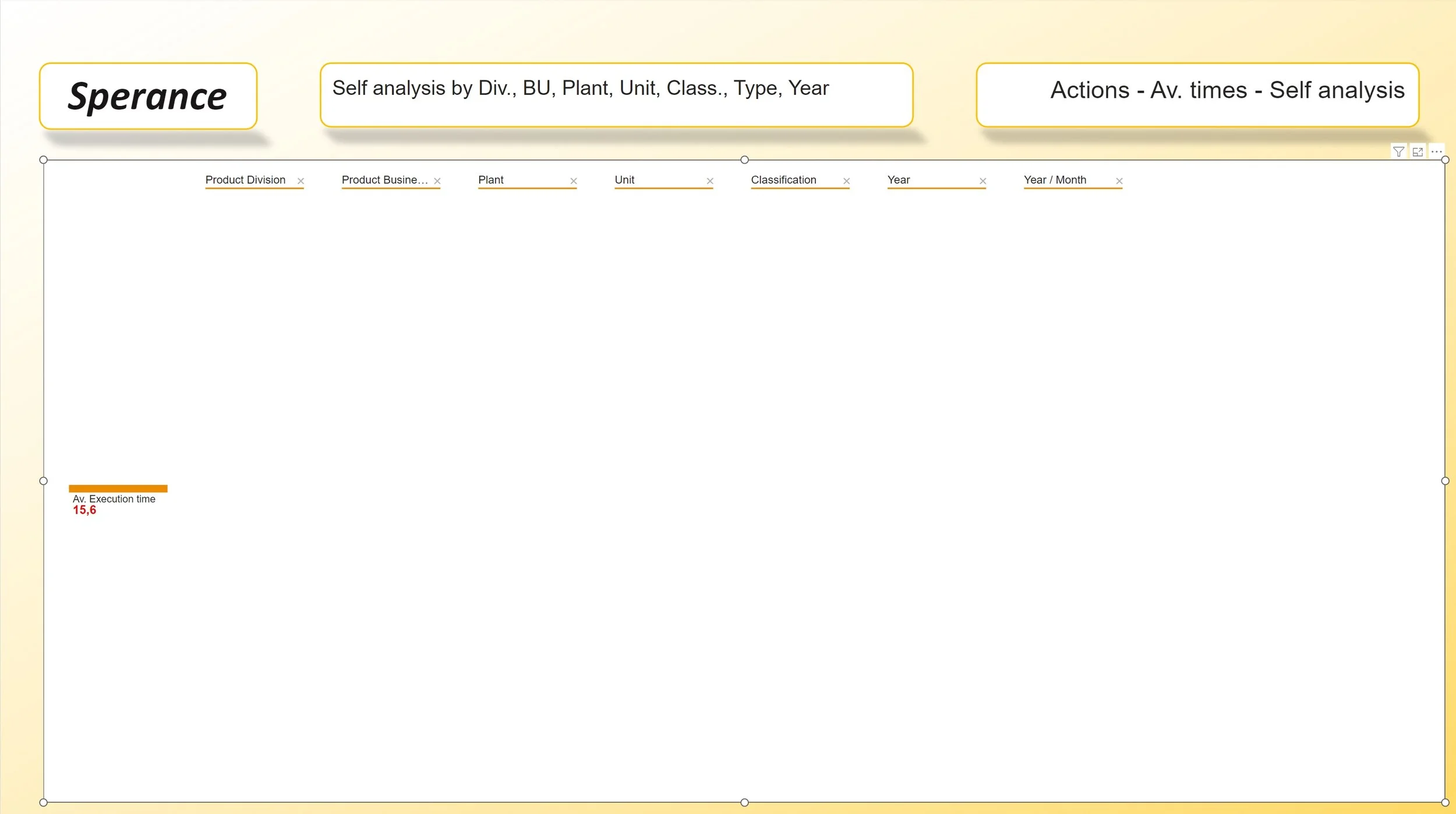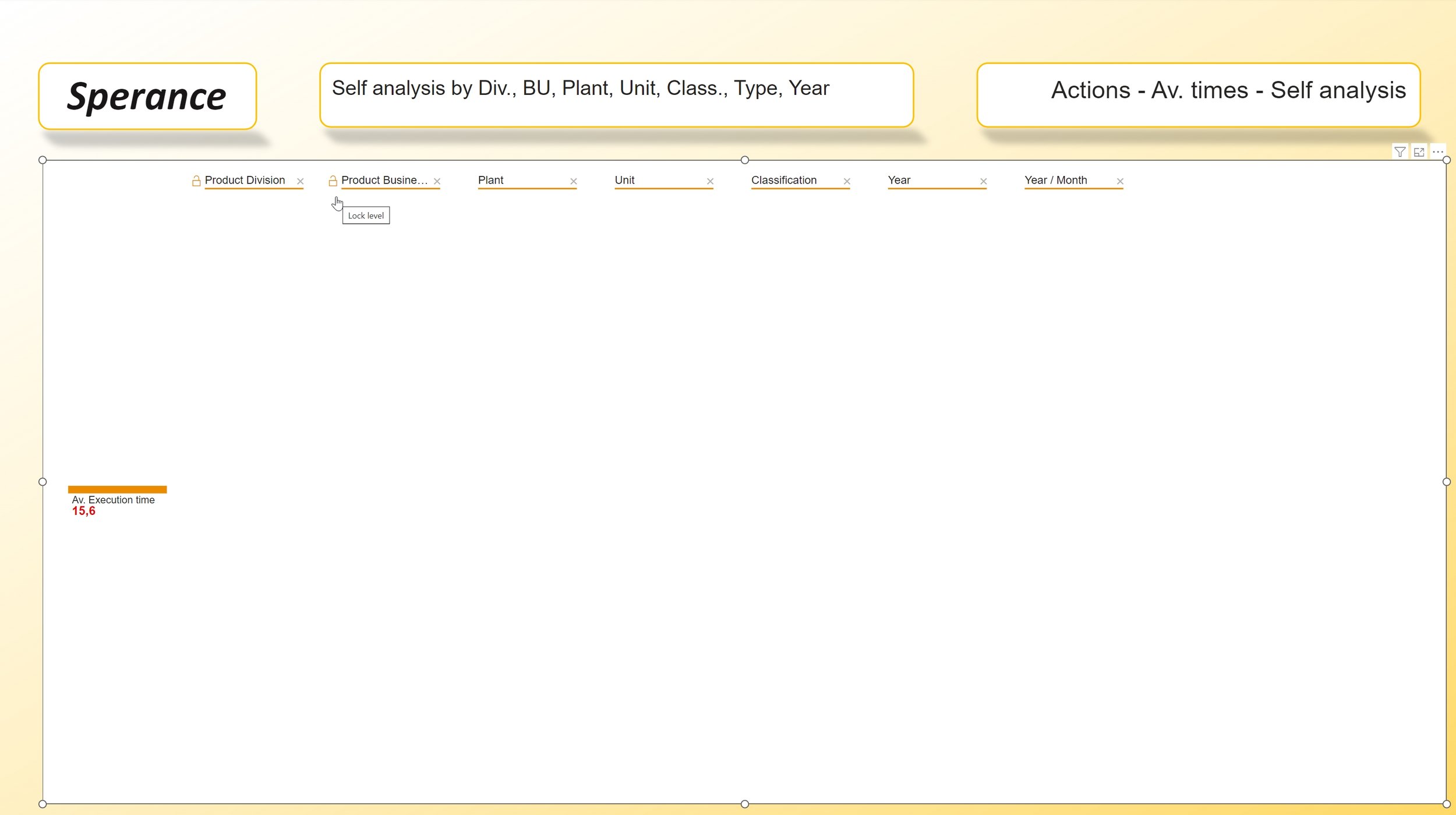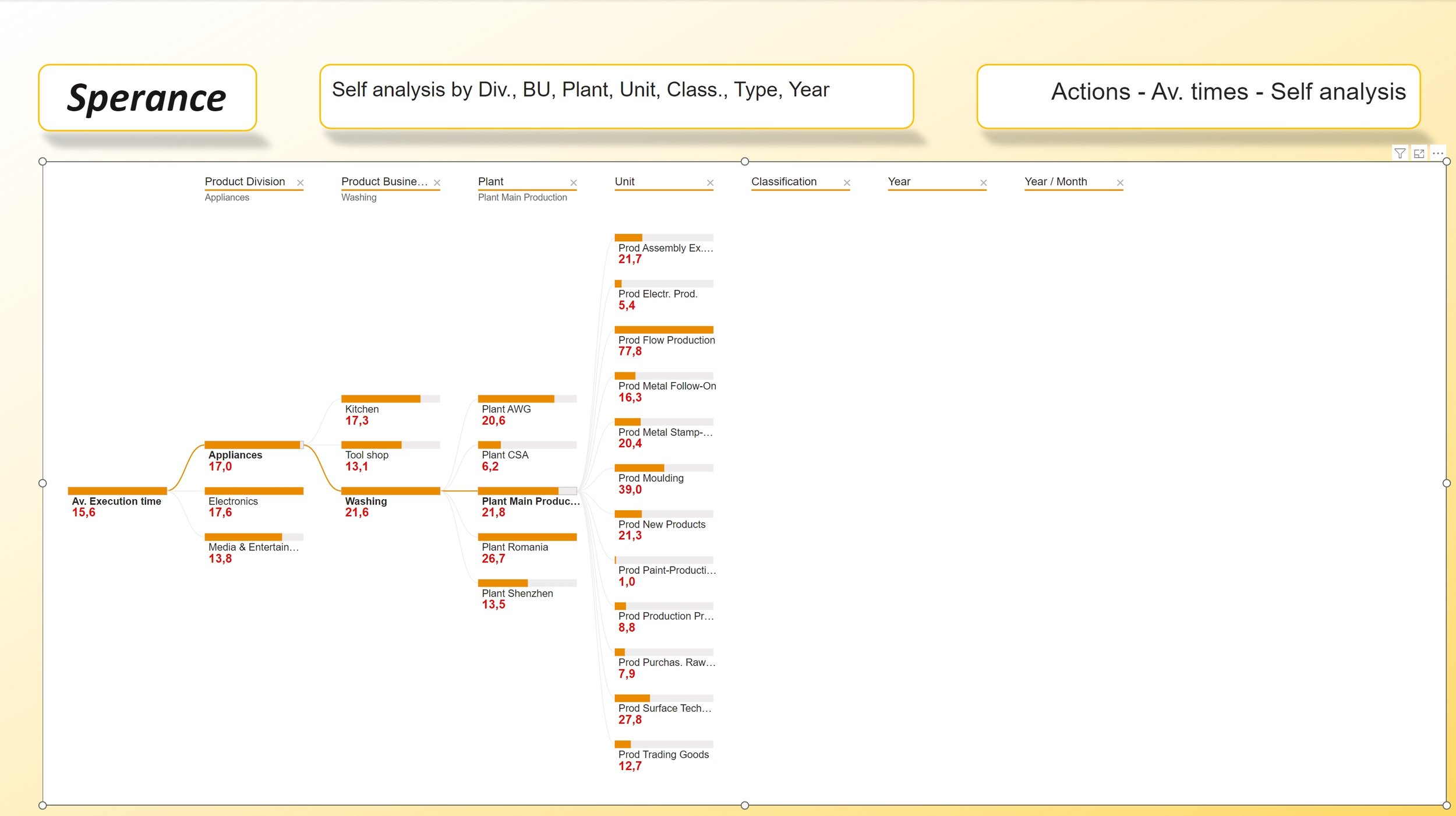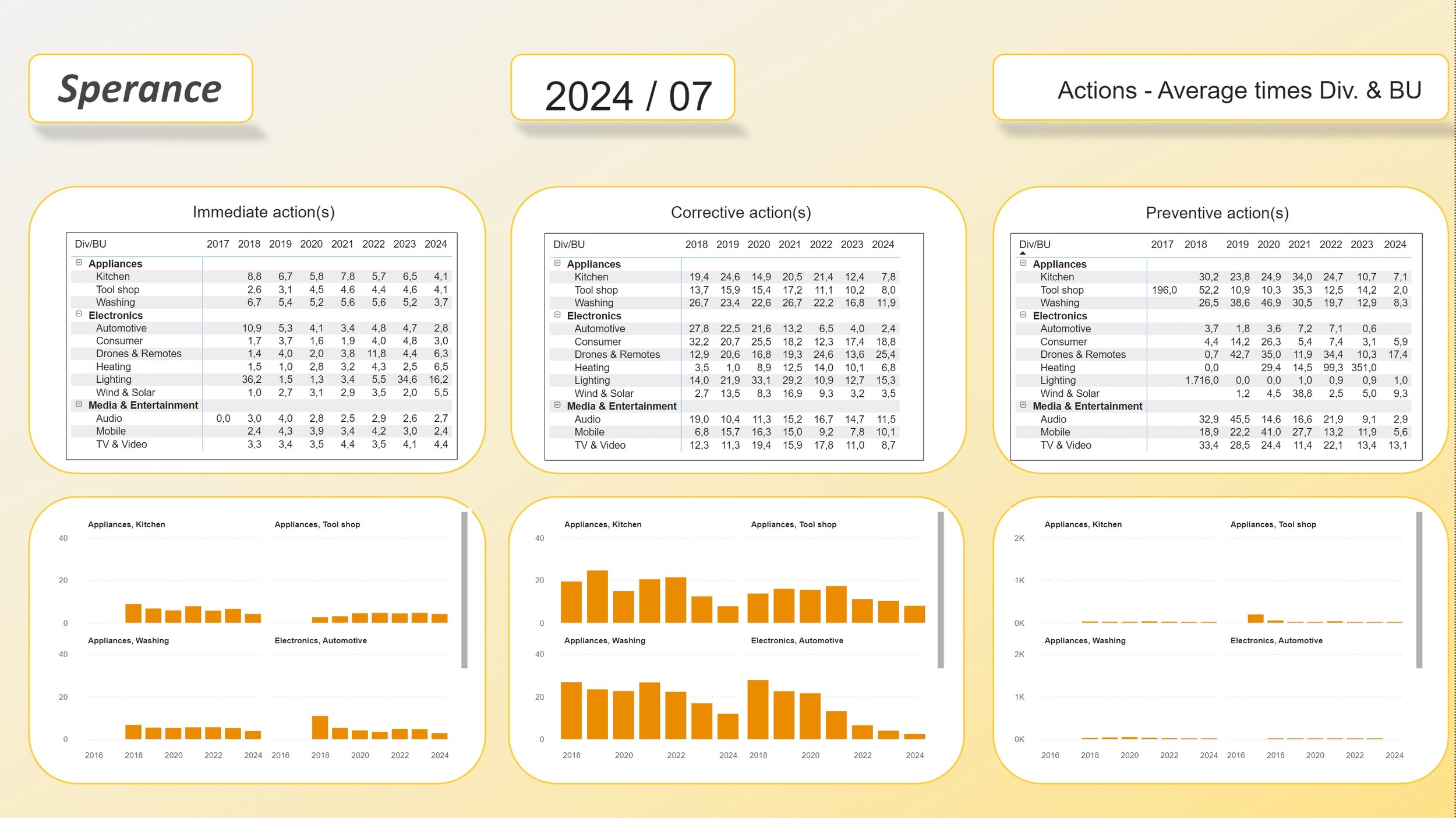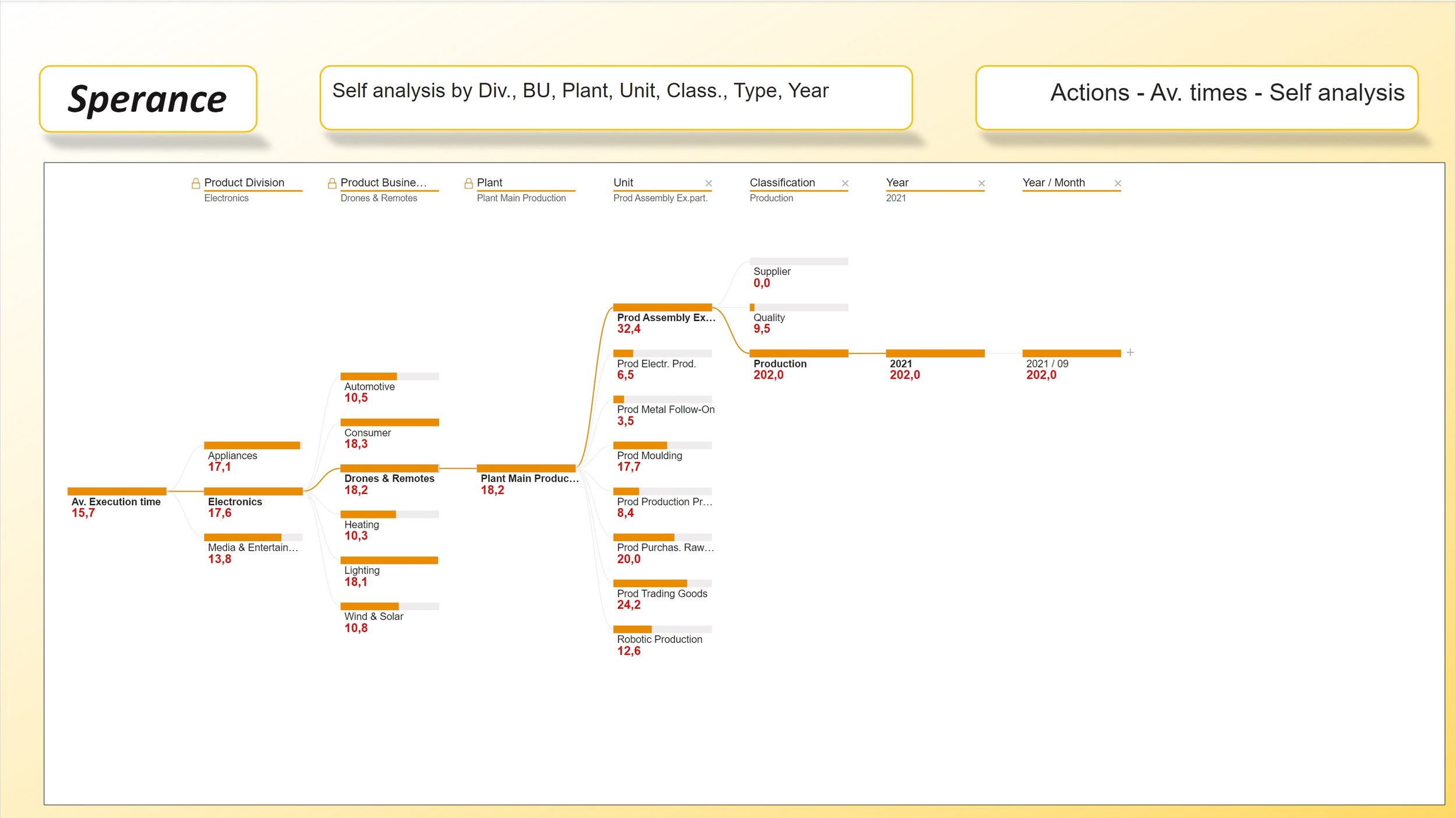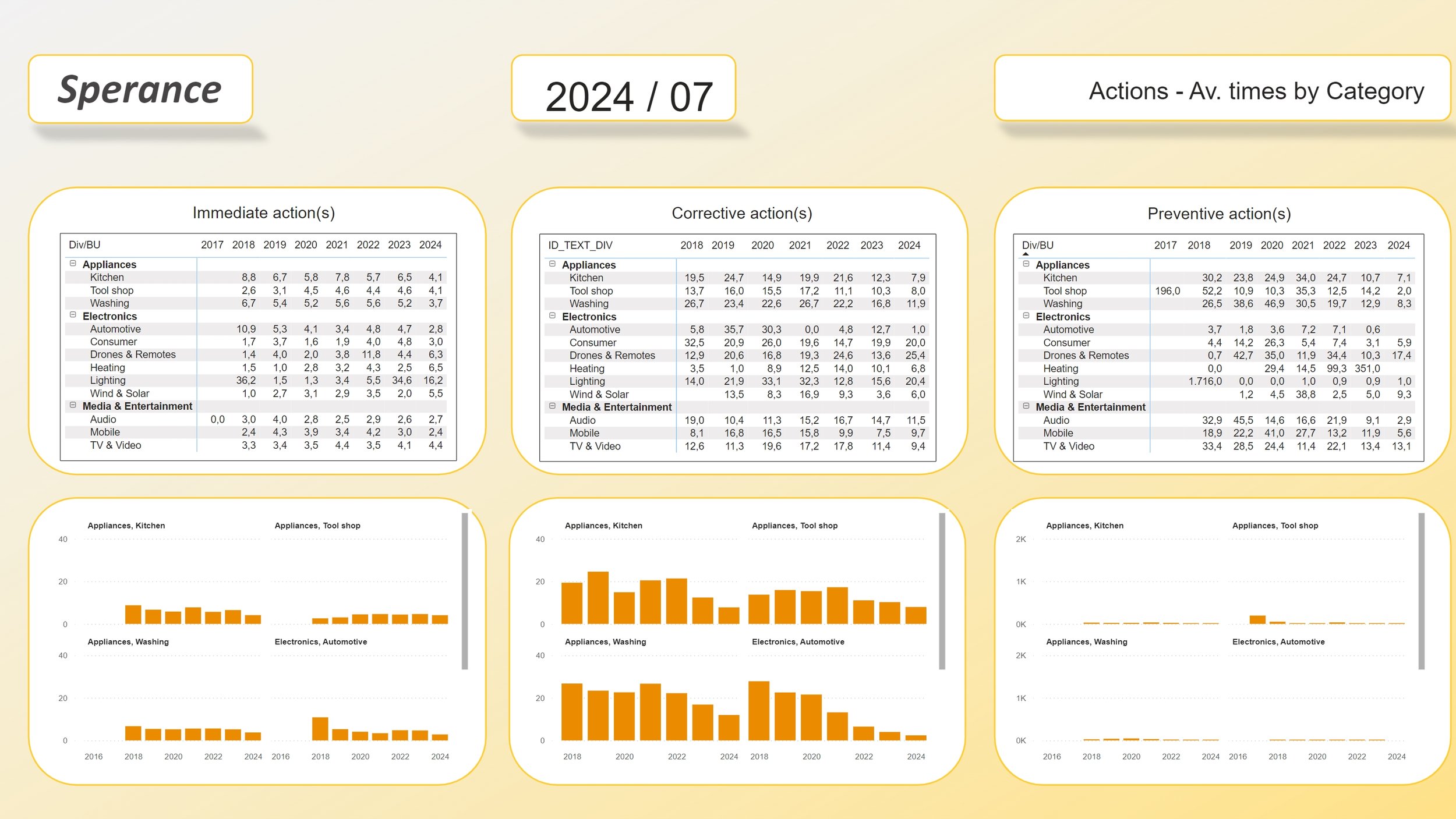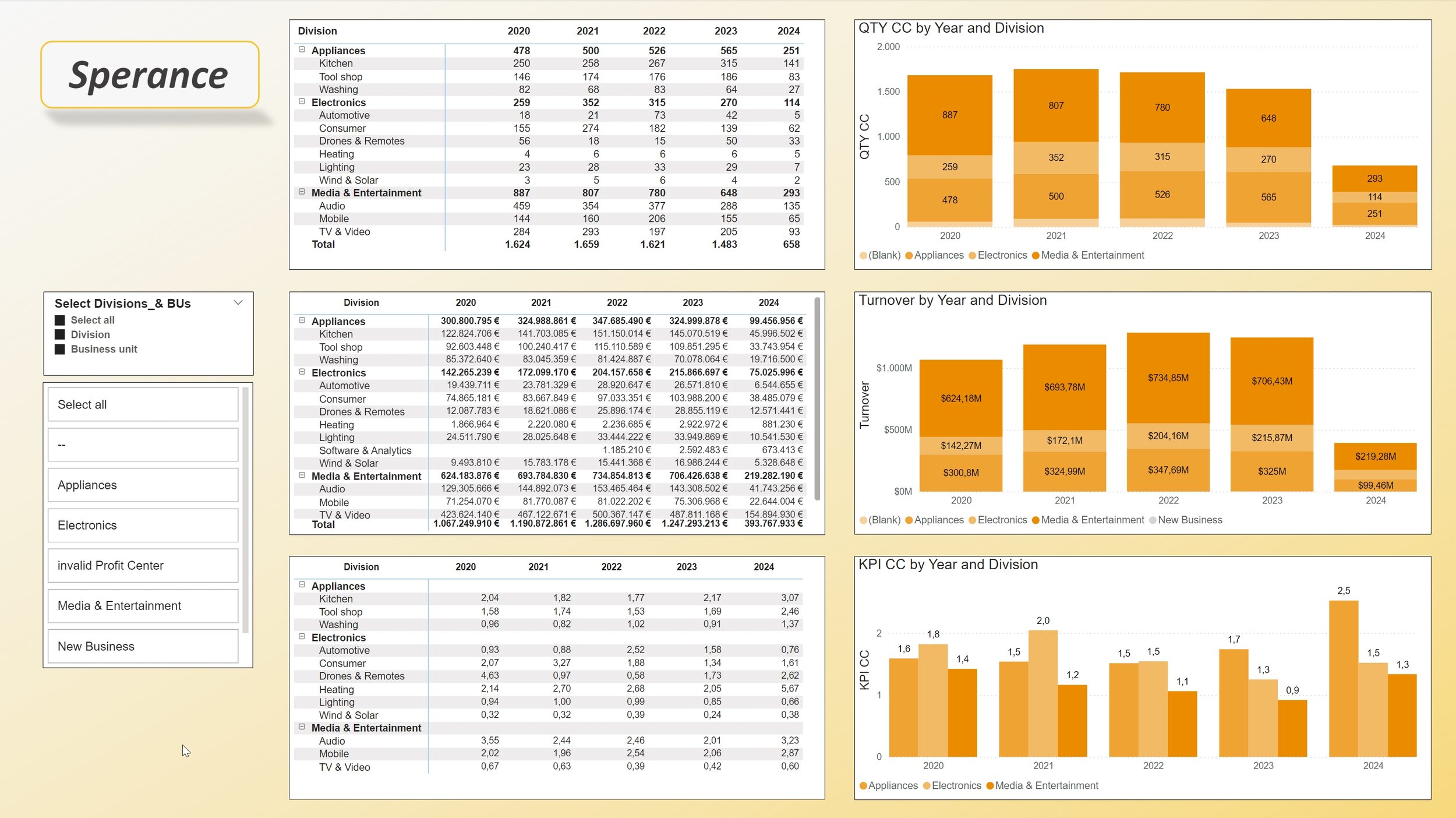Quality report for a global electronics company
Note: All content and figures shown are purely fictitious.
This quality report serves to comprehensively document and analyze quality defects at a globally operating electronics company that sells products in various market segments and categories. With a sales volume in the three-digit million range and international production at several locations, it is crucial to guarantee effective quality assurance in order to ensure customer satisfaction and eliminate sources of error in the long term. The following text describes the entire process of handling quality defects, from recording to final evaluation and analysis.
1. Company overview
The company produces a wide range of electronic products that are divided into different market segments and product categories, including:
Consumer (e.g. Audio, Lighting, Appliances)
Industrial (e.g. Tools)
Energy (e.g. Wind & Solar)
Software & Analytics
Production is located in several countries, with different types of production being used at various production sites around the world, such as mass production, special designs or customer-specific production. Some of the production sites also process customer-specific orders that require customized products or solutions.
2. Quality defects and their classification
Quality defects are divided into three main types within the company, depending on where and in what context they occur:
Quality defects within a production plant
These are defects that occur during production at a single location. These defects can be caused by machine errors, incorrect material deliveries, inadequate work processes or human error.
Quality defects between global production units
These defects, which occur between different production sites, almost exclusively affect assemblies and semi-finished products. This may be due to inconsistent manufacturing standards, non-uniform material qualities, transport damage (logistics) or delays in the supply chain. These defects can also result from coordination and communication between locations.
Quality defects from end customers worldwide
Defects reported by end customers around the world, whether due to defective devices, malfunctions, transportation damage or other product-related problems. These defects are often the result of design flaws, inadequate user guidance or manufacturing errors that become apparent in the use of the product.
3. Recording and reporting defects
Quality defects are recorded and reported in a standardized web system that is accessible to all production sites and customer representatives worldwide. Only trained persons/customer advisors report these cases. Every reported quality deviation is systematically recorded and documented in the system.
The web system offers the following functions:
Automated defect identification: Each defect is categorized according to defined criteria and provided with details on type, scope and affected products.
Geographical assignment: Each fault is assigned to the respective production site or end customer so that the exact source of the fault can be quickly identified.
Routing to the right person in charge: Depending on the type of error, the case is forwarded directly to the responsible person in the relevant production plant, production region or service department.
4 Error analysis and measures
As soon as a fault has been recorded and reported in the system, the assigned clerk is responsible for processing the case. The person in charge carries out a detailed error analysis, classifies the error and initiates the necessary measures. The following steps are taken into account:
1. Immediate assistance for the customer
If the fault affects an end customer, a rapid response is made to help the customer immediately. This may take the form of a replacement device, a repair or another customer service offer, depending on the severity of the fault.
In the event of faults occurring in production, it is immediately checked whether production needs to be stopped or adjusted to prevent further faulty products.
2. Troubleshooting in the production process
The person responsible investigates the cause of the fault and takes the necessary measures to rectify the fault immediately. This may include the adjustment of machines, materials or processes.
In cases of errors that occur in several production sites, a coordinated measure is initiated to standardize the production processes in order to avoid deviations.
3. Prevention of repeat errors
After the error has been corrected, a long-term preventive measure is taken to prevent the error from recurring. This can include training for employees, an adjustment of production parameters, a new quality assurance system or the selection of other suppliers and materials.
It also checks whether existing design guidelines or product design processes need to be adapted in order to avoid similar errors in future productions.
5. Final report (8D report)
After all measures have been taken to rectify the defect, a detailed final report, also known as an 8D report, is prepared. This report is sent both internally for quality assurance and externally to the customer. The 8D report comprises eight main points:
Problem definition: A precise description of the error that has occurred.
Root cause analysis: A detailed investigation of the underlying causes of the defect.
Corrective actions: The immediate steps taken to rectify the error.
Error prevention: The actions taken to prevent the error from occurring again.
Preventive measures: Long-term changes that permanently contribute to quality assurance.
Effectiveness control: Checking whether the measures have been successfully implemented.
Responsibilities: The assignment of responsibilities for all measures.
Completion and approval: The formal completion of the process and confirmation by all parties involved.
The 8D report ensures that the error process is documented transparently and comprehensibly and that the customer is informed of all measures taken.
6. Evaluation of completed processes
Only completed processes are taken into account for the subsequent evaluation. These evaluations are crucial to ensure the long-term nature of quality improvement. Once an operation has been completed, the complete defect processing is analyzed and trends or patterns are identified. These findings are incorporated into the company's quality strategy and contribute to the continuous improvement of production processes and products.
Examples of evaluations:
Frequency of defects by product category or market segment
Causes of defects and the effectiveness of preventive measures
Performance of production sites in comparison with each other
Customer satisfaction and feedback after troubleshooting
7. Conclusion
The Quality Report for a globally operating electronics company is a comprehensive documentation and analysis tool that is used to continuously monitor and improve the quality of products and processes. The systematic recording, analysis and processing of quality defects at various production sites worldwide ensures that errors are quickly rectified and prevented in the future. The final report (8D report) provides detailed feedback to the customer and ensures transparent communication. Only through the consistent evaluation of completed processes can the company maintain high quality standards in the long term and assert itself in global competition.
